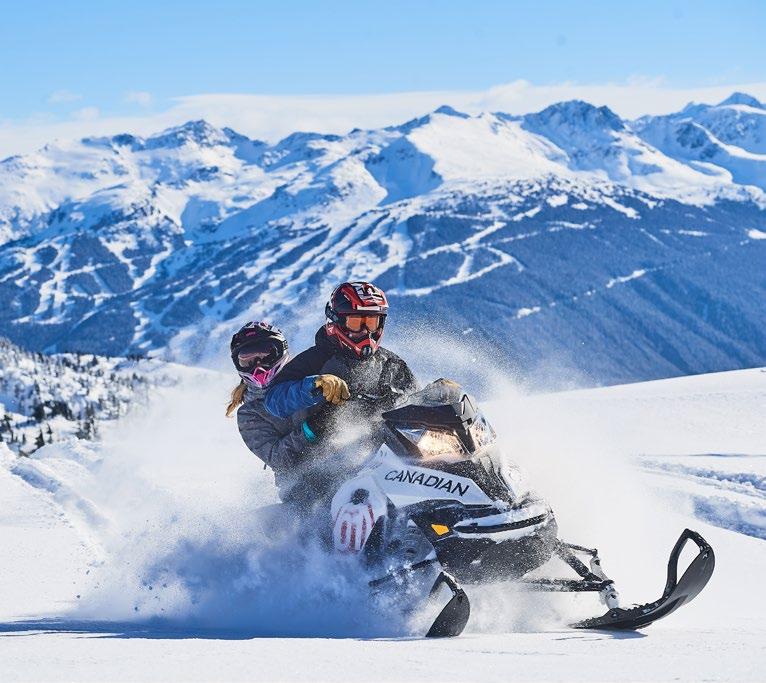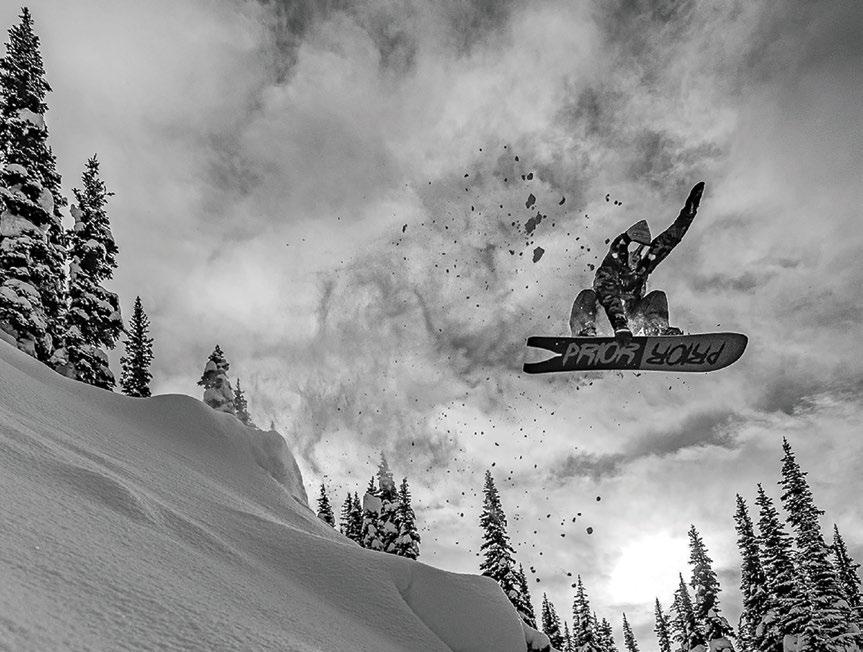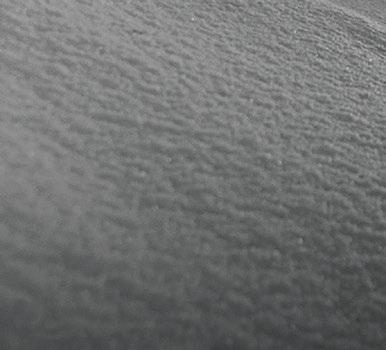FREETOROAM


















Stay with us off-the-grid at the Journeyman Lodge and gear up at evo Backcountry. Access to your 18,000 acre backcountry playground awaits!

NEW: Single-day snowcat rides right to the skin track
< Scan to learn more

Earn your turns with the new Khroma Kinetic. This lightweight ski mountaineering shell is for those who love the up as much as the down. Built with our softest hardshell Proflex™ fabric, it’s waterproof, windproof and packs down small. When you need one system to do it all, from remote touring adventures to stomping the steepest lines, this is it.
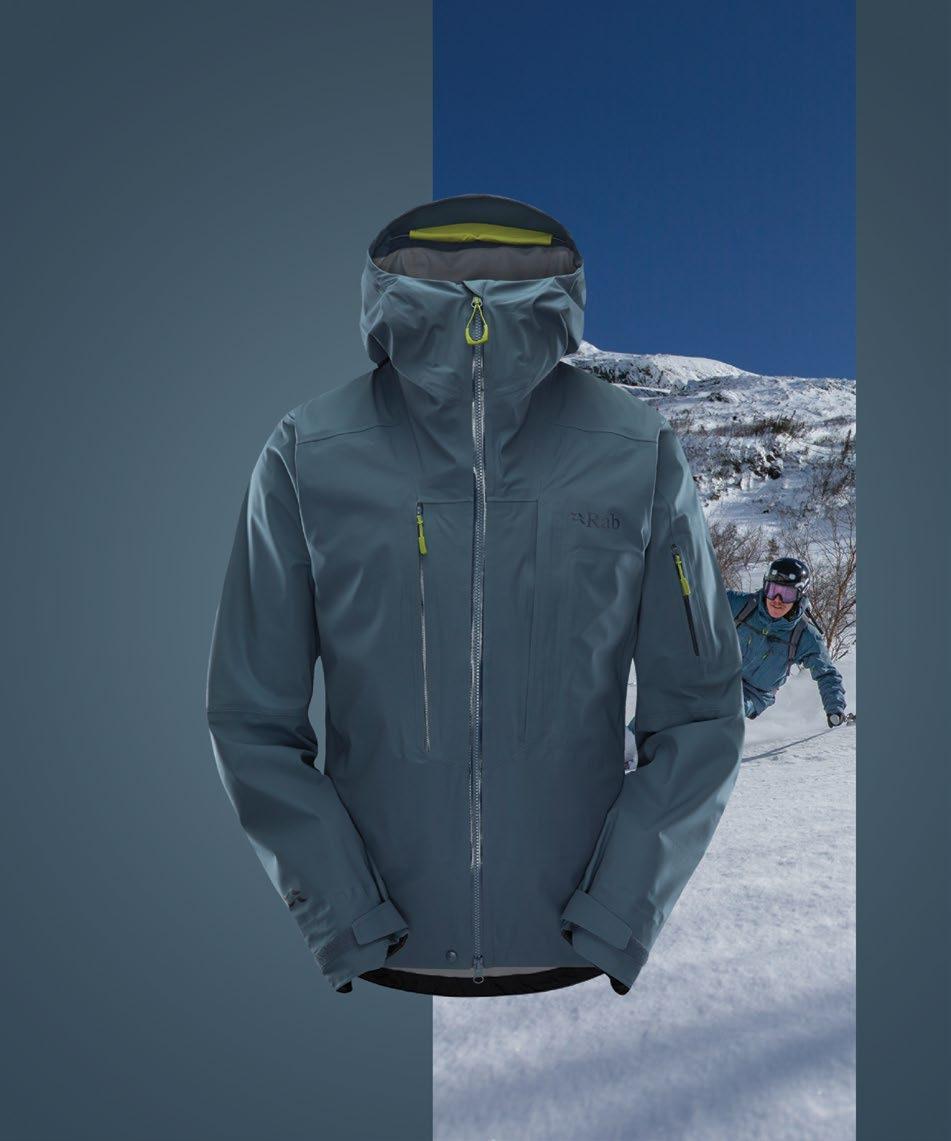

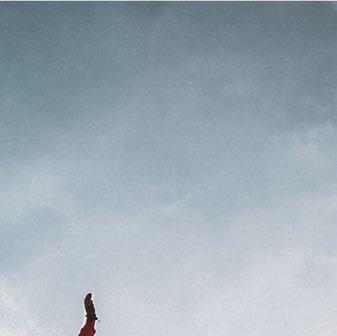

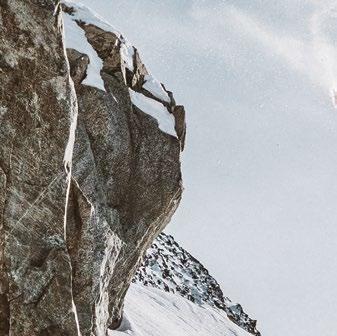
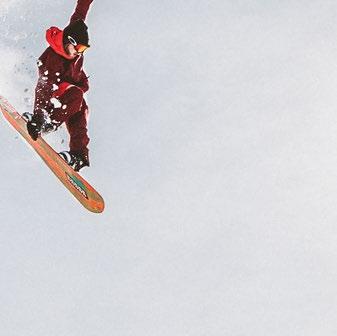


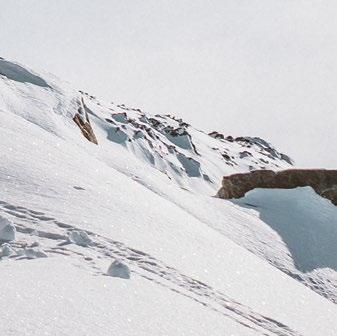

From master mixologists with signature blends of house-infused spirits, to slope-side soaking in our spectacular Whistler mountain resort setting, experience Whistler’s true après at Fairmont Chateau Whistler.

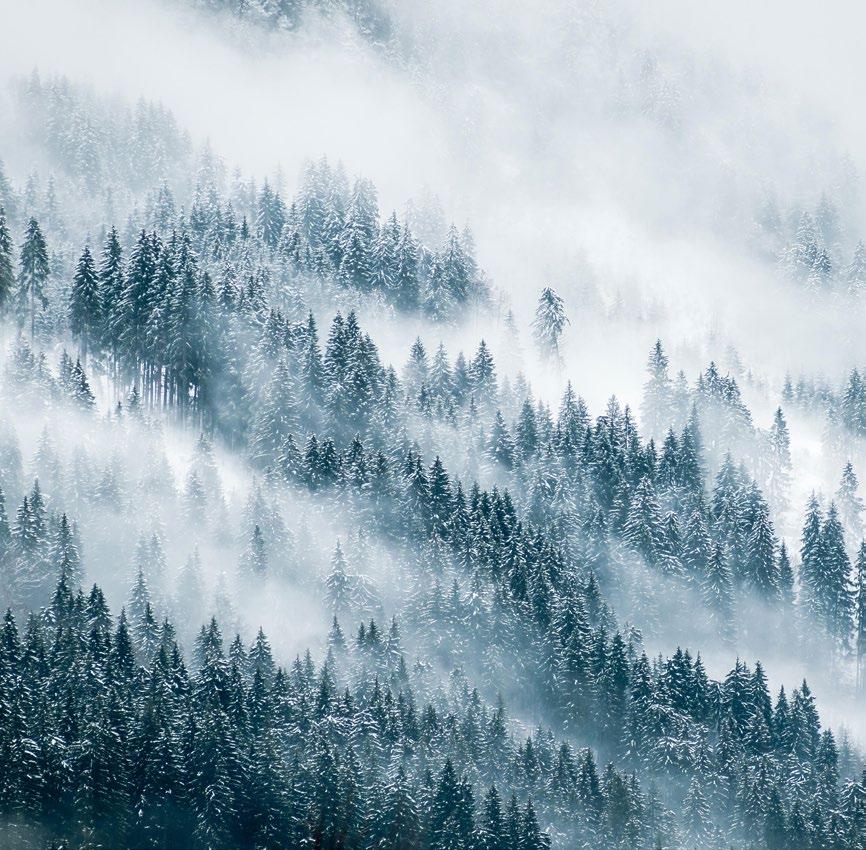


UPFRONTS
P.15 Editor's Message p.16 Behind the Photo p.19 Backyard
P.20 We Were Here Catskiing The Skeena
P.41 Blowin' In the Wind
Shredding Antarctica

P.34 Culture: Poached Winter
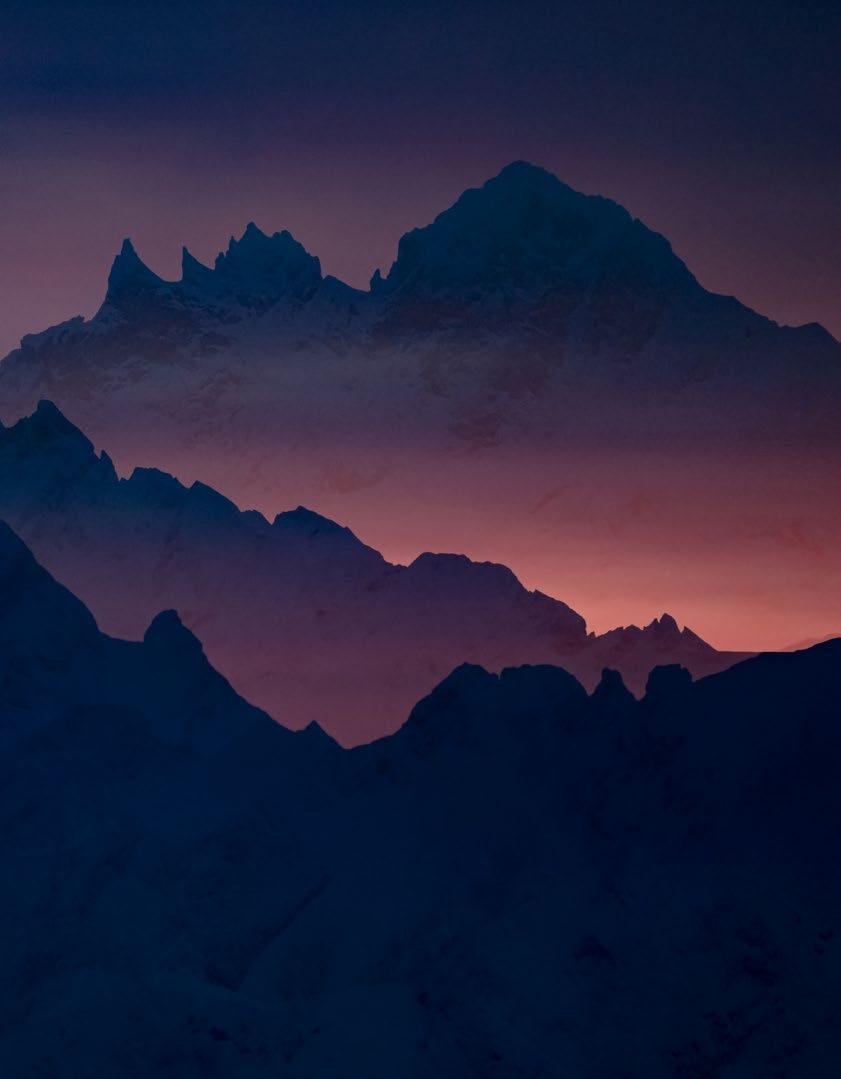
P.54 Downtime: Dry Sides
P.69 Art: Feral Nifty
P.78 Here’s How: To Write A Letter
P.81 Beyond: Chased By Demons
P.84 Gallery: Retinal Pleasures
PUBLISHERS
Jon Burak jon@mountainlifemedia.ca
Todd Lawson todd@mountainlifemedia.ca
Glen Harris glen@mountainlifemedia.ca
EDITOR
Feet Banks feetbanks@mountainlifemedia.ca


CREATIVE & PRODUCTION DIRECTOR, DESIGNER
Amélie Légaré amelie@mountainlifemedia.ca
MANAGING EDITOR
Susan Butler susan@mountainlifemedia.ca
WEB EDITOR
Ned Morgan ned@mountainlifemedia.ca
DIRECTOR OF MARKETING, DIGITAL & SOCIAL
Sarah Bulford sarah@mountainlifemedia.ca
FINANCIAL CONTROLLER
Krista Currie krista@mountainlifemedia.ca
CONTRIBUTORS
Mike Ambach, Andrew Bradley, Kieran Brownie, Taylor Burk, Eric Button, Marty Clemens, Abby Cooper, Nikkey Dawn, Andrew Findlay, Ben Girardi, Diane Hanna, Lani Imre, Reuben Krabbe, Carmen Kuntz, Jennifer Loring-Zyp, Joel Loverin, Jimmy Martinello, Andrew McCurdy, Mason Mashon, David McColm, Paul Morrison, Laura Newton, Marcus Paladino, Dave Silver, Dave Smith
Andrew Strain, Logan Swayze, Jon Turk
SALES & MARKETING
Jon Burak jon@mountainlifemedia.ca
Todd Lawson todd@mountainlifemedia.ca
Glen Harris glen@mountainlifemedia.ca
please call 604 815 1900.
Mountain Life is printed on paper that is Forest Stewardship Council ® (FSC ®) certified. FSC ® is an international, membership-based, non-profit organization that supports environmentally appropriate, socially beneficial and economically viable management of the world’s forests. Mountain Life is PrintReleaf certified. It measures paper consumption over time automatically reforested at planting sites in Canada.
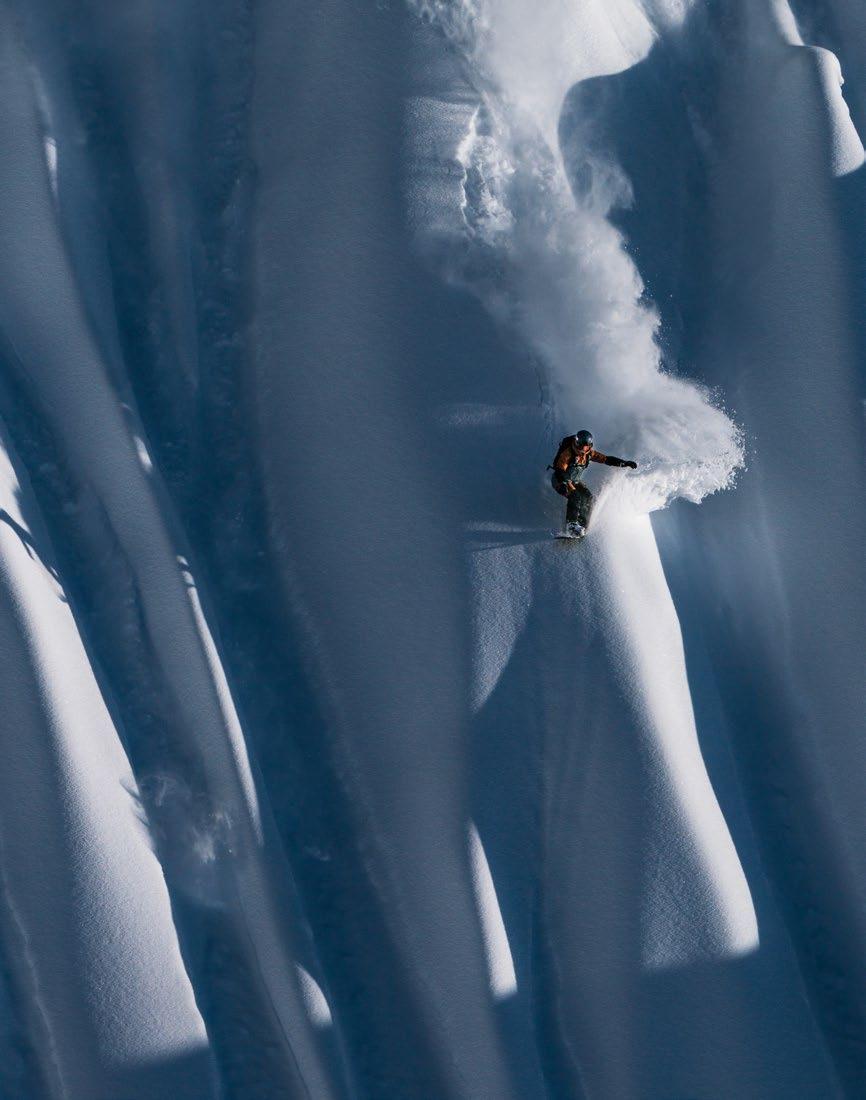
Don’t let the cold stop you.
Our women’s Helix Dry Suit uses waterproof Marine Spec BP fabric, Cordura, and a helical zipper for a dry, warm, and breathable aquatic experience.

/mustangsurvival
mustangsurvival.com
mustangsurvival.com
It’s easy to take it for granted after a while, but here in the Coast Mountains we are never really more than five minutes away from a walk in the woods. Even stopping on the highway to take a leak can lead to a life-changing moment of calm, appreciative wilderness perfection (or at least it feels that way at the time).
The mountains and rainforests we call home allow us the freedom to roam—not just outside, but inside as well. Because within the monotonous repetition of a long skin track (or bike ascent, or switch-backed hiking trail) lies the perfect opportunity for our mind to flush out distractions and scrub the congealed skid marks of life’s anxieties from the brain’s glistening bowl of creativity and contemplation.

Moving through the wilderness—one sliding step at a time—is an opportunity to connect with the moment, with the landscape, and with ourselves. It’s a chance for our minds to wander off into spots unvisited, adventures uninitiated, goals on the horizon, and ideas ready to bloom. Roaming through the mountains gives us the time and space to connect and reflect on who we are, who we want to be, and where we’re going— individually and collectively.

Crazy Ideas, big goals, future plans, memories, daydreams, hopes…they’re all swirling around inside us, ready for action, for fun, for challenge, for growth. And it starts with a long walk outside. We can’t change the world, but we can change the world around us, and inside us. Go roam, go wander, go now.
–Feet Banks
“This was last June, and Ryan Decenzo wanted to use plywood and snow to pay homage to a classic Rick McCrank snow-gap clip from the éS movie Menikmati, which is more than 20 years old now. I went up and saw the creek was open and found this natural in-run and a snow ramp that looked perfect for this potential gap, which is huge: 20 feet, and not mellow. The landing was only four feet wide. You could jump a snowboard over that, and it would look sick.
The set up wasn’t that easy, we used logs from the side of the road as skids and dragged all these sheets of plywood up there. Then I had to get in the water, which was about 0.1 degree Celcius. I couldn’t feel my fingers and was running two cameras at once. Someone had to count him in so I could push the buttons hard enough because I couldn’t react properly. Tyler Ravelle was there on the second angle so we had it covered. And Ryan was doing kickflips over it, a frontside flip, ollies. It was cold and he’d have to put on boots and wade through the creek after every jump, then switch back to skate shoes. He took a bunch of spills but you know, skaters are tough.”

Designed for trail running
Created for flexible shoes and trail running - 12mm toe and 15mm heel spikes give the Trail Crampon Ultra unrivalled flexible grip

learn more at
hillsound.ca

 TRAIL CRAMPON ULTRA
TRAIL CRAMPON ULTRA
There is an internal stillness that comes with breath-hold diving, also called freediving, similar to the first moments after a big snowfall. Sound is muffled and a peaceful atmosphere permeates the underwater landscape.
The underwater world mirrors the winter cycles of the surface, seasonal kelp and seaweed die off to reveal stark, coralline algaecovered rock that is home to a wide variety of invertebrates. Dense bull kelp forests are reduced to a few ghostly stipes, ragged blades trailing in the current. What’s withstood the winter swell lies vulnerable to the slow march of hungry urchins. Once kept in check by healthy populations of sea otters and sea stars, these urchins can create full-blown barrens in an unbalanced ecosystem. But the bull kelp has left assurances, dropping reproductive patches from its fronds to the seafloor before winter began.
Unlike the ocean’s surface, you won’t find any washed-out winter hues down here. Flashing off marine life from rockfish to sponges, greens, blues and purples mix with opposing yellow and oranges everywhere you look. And look far you can, because the winter visibility

of the Salish Sea surpasses that of the summer with no solar-generated plankton blooms to cloud the water. The clarity feels amplified by the cold water running electric over your face, waking up the mammalian dive reflex. Part of which—the urge to hold your breath—you must override to ‘breath up’ in preparation for your dive.
The surface water averages eight degrees Celcius and continues to drop as you descend through the thermocline. We don’t share insulation as thick as our seal or whale co-habitants, so extra millimetres of neoprene for the winter it is. With each silent kick after leaving the surface, your extremities cool as your core calls back blood for vital organs and the heart slows while carbon dioxide levels rise. The spleen reacts to the pressure by sending out more hemoglobin to ferry oxygen around. But this orchestrated response can only sustain for so long.
Eventually, you must come up for air and begin the cycle all over again. Soon spring will breathe new life down here too, the lingcod are already protecting their nests and by the cacophony of barking sea lions and squawking seagulls, it’s clear the herring spawn is not far off. But even in the midst of seasonal chaos, you’re only ever one breath-hold away from visiting the stillness of winter within.
Powder, people, place—a northern BC love story
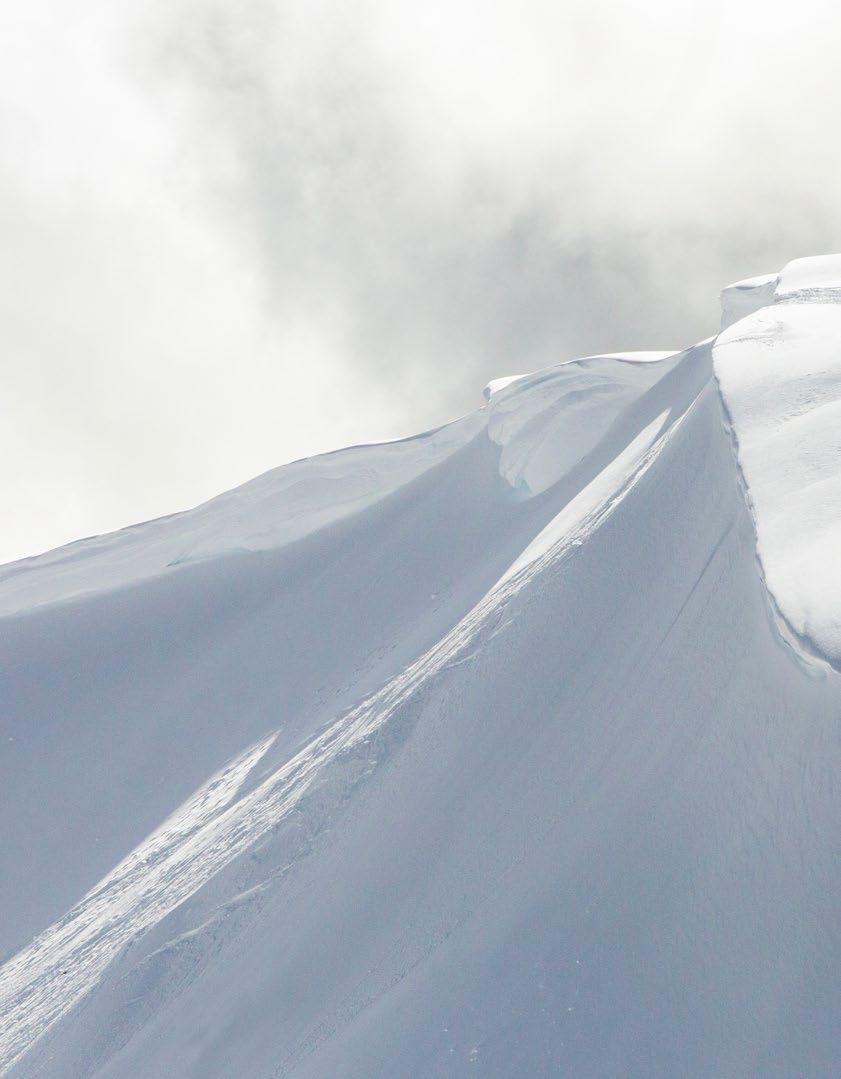
words :: Feet Banks











photos :: Abby Cooper
There is a trend—mostly with tourism organizations and marketing departments, but travel journalists have been on board for a while now too… and the trend is to use the phrase “untouched wilderness” when writing about remote areas like the Skeena Mountains of northern BC.
But the reality is, these landscapes have been touched—hunted, harvested, and lived alongside with—for millennia by the Indigenous peoples of each area. And in the forests above the Skeena River—aka Xsan, the “river of the mist”—and up on the snow-hammered mountain ridgelines of what’s now Skeena Catskiing’s tenure, those people are the Gitxsan.







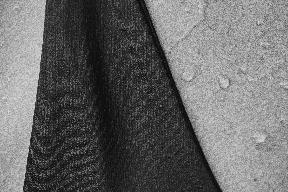


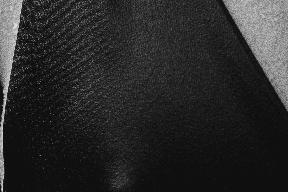








“When I first met Jevon, he told me no people had ever been back there,” explains Gitxsan k’ubawilksihlkw (princess, Chief’s daughter) Jennifer Loring-Zyp. “I said: ‘Hold on, my people lived up there, picked berries, hunted, harvested bark and roots. And if you’re gonna keep messing around in my backyard, you better take me up there.’”
Spoiler alert: He did, and they got married (which only adds to Jenn’s glee while giving her husband—Skeena Catskiing founder Jevon Zyp—a hard time about this kind of stuff). Jevon, who had already helped establish catskiing operations in the Monashees and at Chatter Creek, arrived in Smithers, BC in search of a spot to start up some catskiing of his own.
“Every good area down south was taken,” he says, “so I loaded my truck and my sled and my dog and came up. We pored over topographical maps a buddy had—there was no Google Earth then— and it was probably 2009 or early 2010 when a friend and I punched two snowmobiles in there through super tight trees, the gnarliest trees I’d ever ridden, and rode a bunch of what’s now the tenure…the sickest day of sledding I’ve ever had in my life.”
Part of that is because the Skeena Mountains, and Jevon’s 30,000-hectare snowcat paradise, see an absolute crapload of snow each winter. Just 200 kilometres from the Alaskan Panhandle, the region is close enough to the Pacific Ocean to get hit by big wet storms, and far enough north to turn them into dry, deep, highly-shreddable snow. The other exciting part, according to Jevon, was finding a spot no other skiers, boarders or sledders knew anything about.
“In most places down south, the mountains have names and have been ‘claimed’ by someone,” he says. “There are hundreds of mountains here, not a lot of names.”
Of course, the Gitxsan likely have names for those peaks, but on her first trip into Jevon’s promised land, Jenn didn’t have time to fill her new suitor in on what they were, she was too busy shovelling.

“I took her up in a snowcat on winter solstice,” Jevon says, “and made her work, shovelling out the camp.”



“The whole drive up he was singing this song about how large his balls were,” Jenn adds, “as we’re smashing up this hillside in the cat. And it was Waylon Jennings the whole way down— Paradise. He claimed our first date took so long to happen because he had to make sure the roads were in so he could get me in there.”
Skeena Catskiing now has over 40 kilometres of cat roads, and Jevon built them all himself. “Building a catskiing road is not easy,”

he once explained in an interview for Arc’teryx’s The Bird “If you’re a chickenshit, you can’t do it. You’re in avalanche terrain. You’re smashing up a mountain, smashing down trees. You need more stupidity than smarts a lot of the time.”



That persistence, and the ability to make big things happen with a limited budget and an enormous reservoir of grit and hard work, allowed the Zyps to open Skeena Catskiing in 2011, and those homegrown, DIY, get-creative-and-make-it-happen values permeate the operation today. The terrain at Skeena Catskiing is best in class: huge bowls, chutes, ridges, glades, and an average of 12-18,000 vert of skiing each day, but it’s the warm, personal, familial vibe that

“He claimed our first date took so long to happen because he had to make sure the roads were in so he could get me in there.”LEFT Heated, carpeted guest cabins woud fit in just fine on the planet Hoth. MIDDLE Miskiman digs into another deep, dry Skeena day. RIGHT A map of the traditional territories of the nations living in the Skeena region. BELOW Shovelling hard on Jenn and Jevon's first date. JENNIFER LORING-ZYP
“In most places down south, the mountains have names and have been ‘claimed’ by someone,” Jevon says. “There are hundreds of mountains here, not a lot of names.”


truly elevates what the Zyps have built. It’s not easy to make a life in northern BC, but people work hard and they work together. There’s not a lot of room for needy attitudes or stuffy pretension in a place where it gets dark at 3:00 p.m. and the thermometer can dip below minus 40 degrees Celsius.
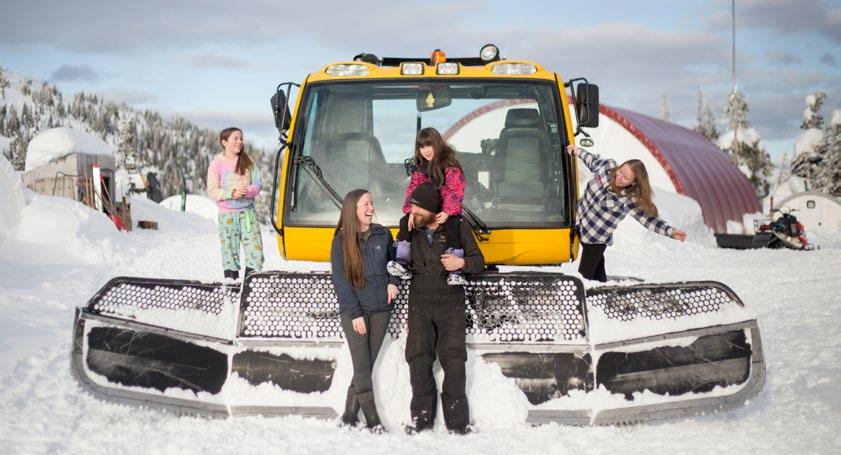
The North, and the Skeenas in particular, have fantastic riding. Skeena Catskiing’s basecamp Quonset sits at 1,200 metres, with the highest of their 50+ set runs topping out around 2,000 metres. After the most thorough and detailed snow safety training session I’ve ever had, our group loads into one of two snowcats and spends the next half hour excitedly scoping potential lines in Jevon’s powder paradise.
And there is no shortage of lines to be had. Those 40 kilometres of cat roads are truly the work of a master. If the snow is wind affected on one aspect, Jevon and his drivers have quick access to three more options. And while the Skeena terrain is notable for the ideal above-treeline shredding, if the weather rolls in, there are also long, gladed runs at every turn.
Our cat is loaded with personality and not short on talent. Overseen by two ACMG-certified guides, our half dozen Canadian media personalities (all previously acquainted because it is indeed a small world after all) are accompanied by two-time Canadian Olympic slopestyler (and Mountain Life cover athlete this issue) Yuki Tsubota, professional get-after-it’ers Jaret Bull and Abby Cooper (who have already been in the North for weeks, living out of their camper, chasing storms, and living the dream), and skier/aviator/icon Rory Bushfield. Laughs are unavoidable with a crew like that in a place like this; lines were shredded, cornices dropped, spirits elevated, and copious spread eagles thrown (see page 29).
The word for eagle in the Gitxsan language is Xsgyaak (skaah-k). The full moon in March is called Wihlax, the Black Bear’s
Waking moon, and in the Skeena Catskiing Quonset lounge, Jenn takes time to share these sorts of stories from the Gitxsan Laxyip (territory) with anyone who gathers around the Indigenous territoryfocused map hanging in the dining area as we wait for yet another feast of delicious local cuisine.
“This is all a part of who we are,” she explains as the first course of dinner arrives, helpfully served by her and Jevon’s three young daughters who have joined us from the family home in Hazelton for the final night of the trip. “We feed our guests. My mom teaches our culture and feeding people is what we do. We even feed our enemies—when the government people used to arrive, we would feed them and then sit to discuss. I haven’t been anywhere in our territory where that is not the case.”
Later—while the Zyp daughters impress us with card tricks, jokes, and at least one theatrical performance in English, French and the Gitxsan language—we sit by the fire sharing stories of local legends, snowmobile breakdowns, common friends, and favourite trips. Jevon mentions that they’d recently found a totem carved into a tree up near basecamp. “Something from a long time ago,” Jenn says. “That would have been a marker on a traditional passageway.” She explains that they will show the totem to the Hereditary Chief whose ancestors lived on these lands, and he’ll have distinct stories related to this specific place, the only catskiing operation in the province with Indigenous ownership.
“We’ve always been here.”
“Yup,” Jevon says. “And that’s my favourite thing now, these mountains have a special vibe. They are my wife’s ancestors, and my children’s. They love me…these beautiful mountains with no one else around. It’s pretty special.” skeenacatskiing.ca



























No one called me Feet Banks back in 1987. In those days, most people called me by my given name—except for my ski buddies, to whom I was known by the most badass moniker to ever schuss the slopes: Twinkle Toes.
Twinkle Toes Banks. Because I was named after my favourite ski run on Hudson Bay Mountain in Smithers, British Columbia. The hill we’d drive three hours in the dark to ski.
In the 1980s, in the northwestern corner of the middle of the province, Hudson Bay Mountain was as good as it got, and it was pretty good. Sure, I recall holding my hands over my face to shield it from hammering minus 25 degree Celsius winds as we inched uphill on the triple chair. A chairlift was a luxury back then though, and all the best runs Smithers had to offer unrolled right from the top of that lift. Footloose, the mogul run. Ptarmigan, the rolling, curving, perfectly-sloped natural GS turn paradise. Alpenhorn, the black diamond that instilled fear, but not as much fear as skiing the moguls under the chair, where hot dogger tricks were mandatory.
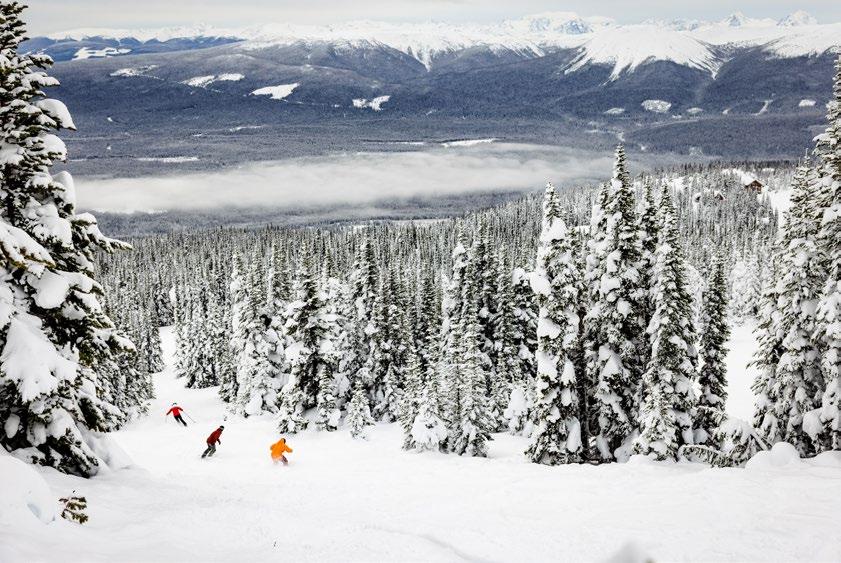
And Twinkle Toes, a soft-rolling green that didn’t look like much, but the edges of that unassuming slope held some of the best sidehits on the mountain. Dip a bit deeper, and the trees opened up in barely-hidden glades that would hold that ultra-dry, subzero northern BC pow most of the day. Given the choice, that’s where I’d be skiing— Twinkle Toes Banks—and the trick I was doing, about 93 percent of the time, was the spread eagle.
For most skiers, the spread eagle is the first trick we learn. The safest and easiest ski manoeuvre possible: simply spread your legs as wide as you can, and fly.
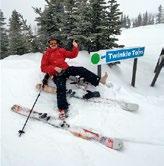
“It hasn’t changed in four decades,” notes American ski journalist Brad Northrup. “The only trick your dad can do,” claims some other webpage that isn’t even live anymore. Even Mountain Life Annual editor Les Anthony weighs in, albeit with a fancy flourish: “the spread-eagle-ball-grab-peace-sign might be the most complete statement of the skier ethos possible.”
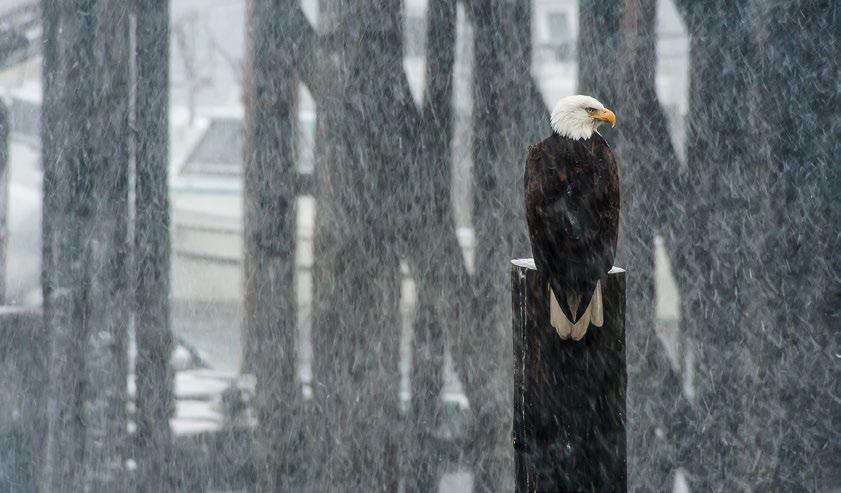
And since Rory Bushfield had proclaimed “the eagle” the only acceptable trick while we ripped pow at Skeena Catskiing, we had agreed by consensus that such rules would carry over to the slopes of my youth. Eagles were thrown (copiously), toes were twinkled, and Hudson Bay Mountain provided me with one of those full-circle quantum leap-nostalgia moments that ring so true and right, it’s easy to forget that there’s ever been anything but friends and snow and gravity.
When it comes to northern BC ski resorts these days, the cool kids and the influencers are all gushing praise at Terrace and Shames Mountain (and it is kind of a ski tourer’s heaven on Earth), but if you’d rather just arc huge fast turns, throw eagles off side-hits, twinkle some toes, and crush pow in the trees all day…Smithers is the place to be, and it kinda always has been. Don’t even get me started on the fly fishing. hudsonbaymountain.ca
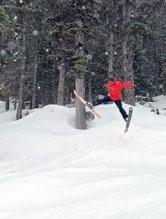



The spread eagle is the first trick we learn. The safest and easiest ski manoeuvre possible: simply spread your legs as wide as you can, and fly.



























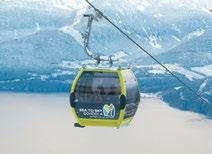
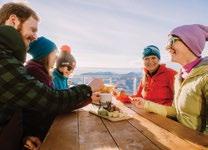





words :: Andrew Findlay photography :: Dave Silver
The quest for elevation can be a powerful engine of ingenuity. Take the ski lift, as an example. It started rudimentary, with rope and handle tows. Then someone introduced chairs, though not always successfully. I once rode a one-person chairlift in the Scottish Cairngorms that faced at a right angle to the direction of travel, making for an awkward load. It required a perfectly timed penguin hop onto the chair as it swung around the bull wheel (Warren Miller would have had a field day filming this lift line). As far as I know, the universe unfolded as it should, and this ski lift innovation died where it was born—in the Highlands.
Times have changed. Today’s high-speed six and eightperson chairs have cushy heated seats and automaticallyactivated plexiglass bubbles to protect riders from the elements. Modern gondolas with astronomical budgets— like the 28-seater that shuttles 2,000 skiers an hour to Klein Matterhorn at an elevation of 3,821 metres—are being strung across the European Alps at an unrelenting pace.
But ski lift innovation isn’t entirely the domain of Doppelmayr and Leitner-Poma. Some do it the full dirt-bag entrepreneurial way. And so, on a February afternoon, on the north side of a Vancouver Island mountain that shall remain nameless, a friend and I go in search of a legend. We’d long heard a rumour of a makeshift ski lift on the slopes of a favourite backcountry skiing destination nestled between the east coast of the Island and Strathcona Provincial Park.

Wild tales circulated through the skiing community the way word of El Dorado gold-fever infected the imagination of the Spanish conquistadors. The rumours soon took on more a tangible form after someone sent me a video, as grainy and shaky as a sasquatch sighting caught on a mid-2000s cellphone camera…but there it was: a dude in a climbing harness tethered to a slow-moving rope and dangling 20 metres or more off the deck!
The video held few distinguishing topographic features to help identify the location. I could make out a snow-covered lake the size of a few football pitches at the base of a steep subalpine slope. In other words, it could have been anywhere. However, loose lips cross tips and with a bit of sleuthing I obtained the names and numbers of the alleged entrepreneurs behind this DIY marvel. Several calls and
text messages yielded crickets in response. I could only assume that they had moved on from this endeavour, got serious jobs, maybe even families, and didn’t want to draw attention to a what was a bold trespass on forest land owned by TimberWest. Fair enough, I’d just have to explore and find it on my own.
Well, almost alone—I bring photographer Dave Silver along for company. A short heli bump later and there we stand, mischievously gazing around on a flat-topped ridge of trees. To the north, crude logging slashes quilt the benchlands unfolding toward the Salish Sea. In every other direction, the views are tantalizing: jutting peak faces,

But ski lift innovation isn’t entirely the domain of Doppelmayr and Leitner-Poma. Some do it the full dirt-bag entrepreneurial way.LEFT The author leads the way up an unnamed couloir on a secret mountain somehwere on Vancouver Island. RIGHT Abandoned. The old lift shack with bull wheel, gas-powered engine, tools, jerry cans, etc.
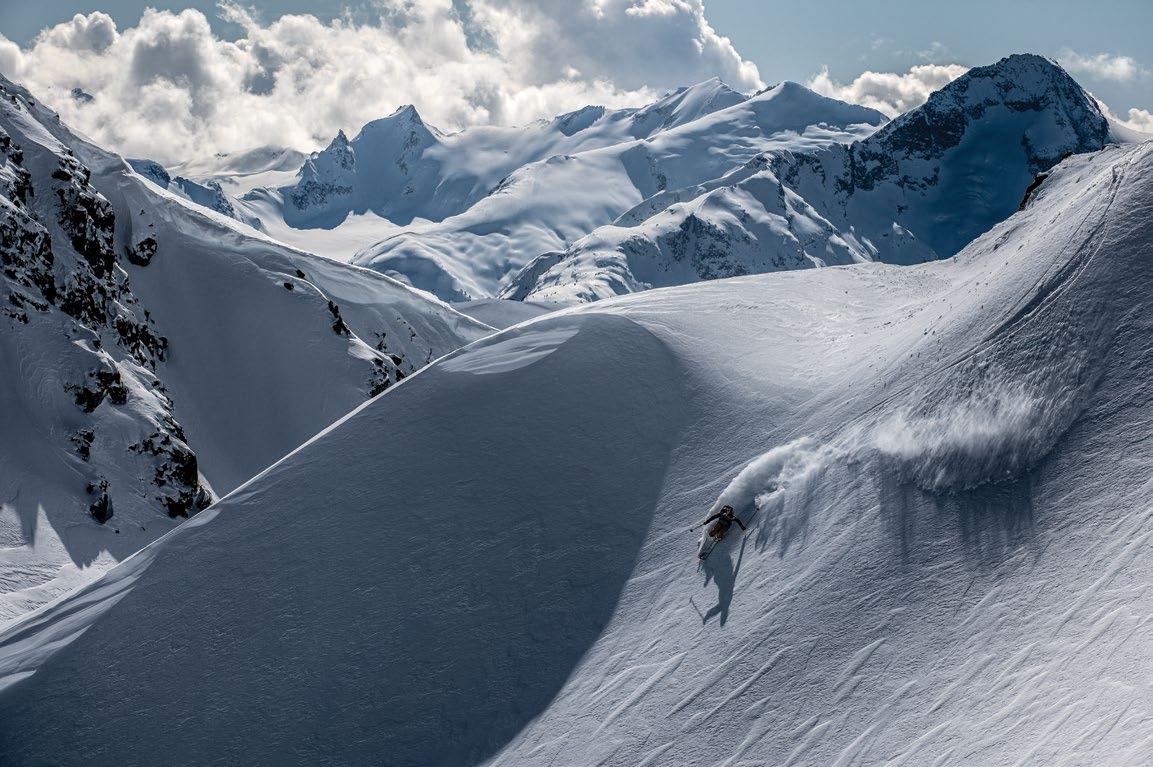

bowls, couloirs, and steep flanks of alpine rainforest tree skiing with ocean views. It’s easy to see what motivated these Vancouver Island DIY’ers to erect a ski lift on this privately-owned peak years ago—this place is incredible.
Surprisingly, I recognize the lake below us from the video, or I hope I do. We drop into an ancient forest. Methuselah’s beard lichen festoons the trunks of hemlock trees; unkempt and wild. Fresh powder is cratered by tree bombs, dislodged by early afternoon sun. Twenty turns later and we’re shuffling across the surface of the frozen lake toward a boulder field on the opposite shore. After a few minutes of poking around in the woods, we find it—a tiny A-frame lift shack. From afar it was barely distinguishable from the surrounding snow-capped boulders, but up close it’s surprisingly welcoming, despite the musky smell that taints the air, a blend of grease and rodent poop. I could live here for a while.
Instead, we begin investigating the premises CSI-style. A Honda four-stroke is connected by drive shaft to a small bull wheel. Someone has written, “Pay Up $ucker” in white paint on the wheel. Two weathered climbing harnesses and a coil of rat-nibbled webbing dangle from a hook in the wall. Three steel carabineers, their locking gates rusted shut, are speared onto a fat spike. Unopened cans of Extra Old Stock perch next to an open toolkit containing a few greasy crescent wrenches. Clearly these guys could make and fix stuff. Instinctively, I reach out to crack a beer but then hold off. Doing so would feel like snaffling perfectly preserved tiger nuts from King Tut’s tomb—tempting but sacrilegious.
There’s also a red jerry can, still half full of gas. Glancing around the shack, it has the look of a place abandoned suddenly, as though a paramilitary backcountry patrol had appeared from nowhere to snuff out this outlaw private “ski resort.”
There’s no sign of the haul rope, perhaps long since fallen to ground and now entombed in snow. We skin up the steep, sparsely treed slope where we surmise the theoretical lift line would be, searching in vain for the upper bull wheel while also noticing a few rusty wheels still affixed to trees. These would have served as lift towers, ghostly relics that excite my inner stoke. What backcountry
fun has been had here? It must have been glorious, while it lasted. It also makes me wonder if the folks behind this ski lift, ghostly but not forgotten, would have been in the market for a PL1?
Proof that DIY skier ingenuity knows no boundaries, the PL1 is a skier-made “personal ascension device”—essentially a renegade rope tow you carry in your pack. Engineer Robert Button spent three years in a Richmond, BC workshop developing what he thinks is a portable lift that backcountry skiers of a certain ilk would want.
“I was lured into the backcountry to explore some beautiful new places and to ski great snow away from the crowds. I enjoy the physical challenge and the exercise you get from ski touring, but it definitely isn’t the reason I got into it,” Button explains. “I know I’m not the only person in that situation, and I know I’m not the only person who thought it would be nice to have a lift when I’m sweating on the up track.”
After tinkering around with brushless motors and lithium batteries, and some back-of-the-napkin math, Button figured that the idea of a backpack-ready portable lift was feasible.
So, he invented the PL1. It weighs 4.5 kilograms, fits in your backpack, and can tow a skier weighing 72 kilograms up a 15-degree slope for roughly 1,200 vertical metres on a single battery charge. If you’re lighter you get more vert, if you’re heavier, less. All the skier needs is a tree or boulder at the top of a hill and they’re good to go. Button says his lift is optimal for lower-angled slopes at or below tree line that accesses steeper, downhill terrain.
Button’s first batch of PL1s sold out quickly, but he’s still tweaking the technology based on his own field testing and customer feedback. He’s convinced there’s a market for the device, though critics say on the surface it appears too nerdy, too specific, and may be best suited to the Sprinter-owning, #vanlifer who already has every other toy. For others it might be too finnicky a device, a dainty deadweight in the backpack.
Time will tell. Maybe Button has revolutionized uphill ski travel, or perhaps the PL1 will follow the fate of the clandestine rope tow of Vancouver Island, its legacy buried in the very pow its inventors sought to shred.












 Joel Loverin laying down some turns on Livingston Island with Half Moon Island in the distance.
Joel Loverin laying down some turns on Livingston Island with Half Moon Island in the distance.
 words :: Joel Loverin photography :: Matthew Bruhns
words :: Joel Loverin photography :: Matthew Bruhns
Ushuaia, Argentina is one of the windiest cities on the planet. Now, one thing you need to know about me is I really f*@king hate wind. It gives me anxiety. Working as a roofer all summer and spending every winter in the mountains, at no time of the year is wind doing anything good for me.
Still, the capital of Tierra del Fuego did not disappoint. Claiming the title of the world’s southernmost city (and also known as “the end of the world”) Ushuaia is surrounded by mountains and we spent almost a week exploring the city and countryside—doing all the best local hikes, taking in the beauty, eating Argentinian beef every day and sipping on ipa (beers) and the most delicious local gin I’ve ever tasted. With a 124-metre ship ready to ferry us on the shred trip of a lifetime to Antarctica, even the windiest of winds couldn’t tear the tent walls of my stoke.
Rugged, remote, and loaded with serious exploration history, Antarctica is one of the last true frontiers of wilderness on the planet. It’s definitely not your average snowboard road trip, so when snowboard guide/artist/ shred queen Jessa Gilbert set up a boat trip through Ice Axe Expeditions to access the frozen continent and carve some turns, I packed my sailor’s hat and jumped aboard. It wasn’t until the night before we set sail that I learned Antarctica is considered the largest and windiest desert on earth…all aboard!



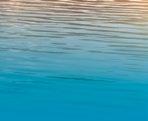
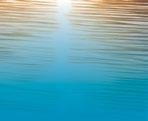











November 29, 2022
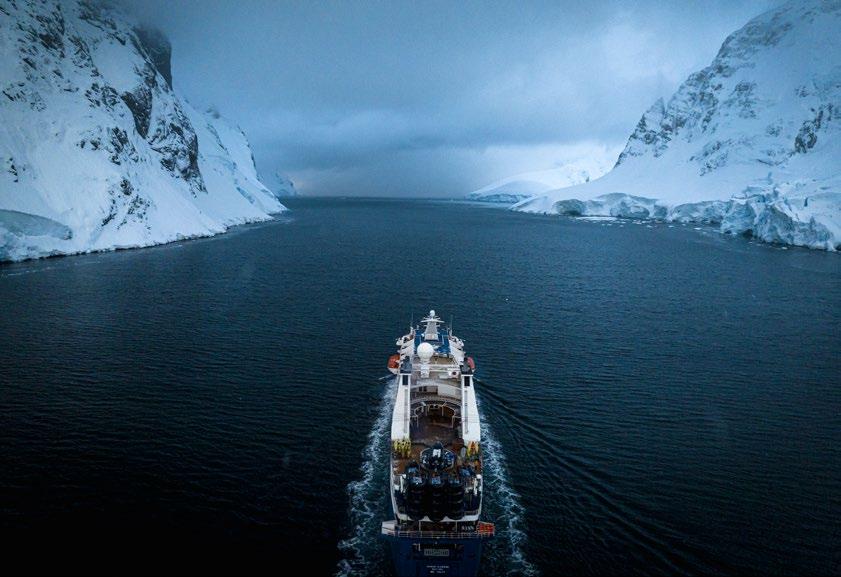
With a 15.5-knot cruising speed, the Ocean Diamond powered through the Drake Passage overnight. The seas had been rough (the Drake is notorious for being the most challenging passage of the trip) but I couldn’t help but think how easy we had it compared to Shackleton and the other early Polar explorers who’d braved these seas in wooden sailboats outfitted with wool sweaters and animal skins. Standing on deck, bundled in down and three-ply GoreTex, I felt a bit soft. But also stoked.
Deception Island is the heart of an ancient volcano and home to a bloody past. From 1911-1931, a Norwegian whale processing plant built on the island processed more than 70,000 whales for their oil before finally closing down due to a slump in whale oil prices.
Though those grim days are long gone, the volcano still has some life in it. Steam rose from the beach in whisps as we landed the Zodiac. We skinned up over snow covered in what looked like volcanic ash, but it rode smooth, and we enjoyed a beautiful descent on some of the best corn snow I’ve ever had. The old whaling station boilers are still standing, the only remnants left after a mud slide from a volcanic eruption in 1967, maybe a good thing, to wash away some of the island’s tragic history.

November 30

Technically a super yacht, the Ocean Diamond easily accommodated our 170 passengers—skiers and snowboarders all of us—plus at least another 100 crew, staff, and guides. The previous night I’d met a little boy, eight years old, who that very day had beaten his sister’s record for being the youngest person to ski on every continent in a single year. I wondered what Shackleton would have thought of that.

Dawn broke to find us anchored off Georges Point on the northern tip of Rongé Island. It stood stark and beautiful, blanketed with fresh snow. The sun showed itself—stoking everyone—and most of the crews had their eyes set on the nicely sloping 1,158-metre peak. But with quickly moving weather our “team”— Jessa, myself, and Matt and Erin Bruhns—made a good choice to do something different. We found a sweet couloir less than halfway up with our names on it. A storm came in quick and, for one lap at least, we shredded good snow—led by Jessa—and knew we had made the right choice.
A storm rolled in quickly (not unusal in Antarctica), and by the time we were transitioning to ski mode to get back to the beach, I had a hard time even standing up. Yes, there it was, the thing I hated most… the f*@king wind! It would hit us so hard from one direction, then swing and hammer us from the other. Trudging onward, I leaned into the gale to hold my ground, but would suddenly find myself plowed into the ground when it switched around.
Frantic from the loud sounds of ice and snow blowing into our faces, everyone was tense with panic as we bee-lined towards the vessel. A gust pushed Jessa so hard I thought it would snap our rope and push her over the 30-metre ice cliffs dropping directly into the ocean beside us. Somehow, we made it to our Zodiac and got out of there but would later hear stories of other groups who struggled to reach the summit and get back down through whiteout conditions and crevasse-filled terrain. I think some were afraid they’d be spending the night up there. I was afraid I’d miss the snack assortment back at the ship.












I heard the squawking first, and as we drew nearer to shore, and the thousands upon thousands of Gentoo penguins, it looked like we were about to wade into the biggest party of all time. But as we got closer, it began to look more like horror scenes from a Rob Zombie movie—each penguin’s white belly appeared drenched in blood. Nope, not blood…feces, stained red, we

learned, from all the krill and fish penguins eat. Then came the smell, something like a dumpster behind the dodgiest seafood joint down the foulest back alley on a stifling hot day—possibly even worse.
After growing accustomed to the smell, and avoiding the thickest “mosh pit” areas, we got close. The penguins were cute, and as curious of us as we were of them. Waddling towards us, they’d just stare up at us with kind eyes that seemed to have as much personality as a pet. Everyone on the ship had been waiting to see these birds, and the penguins didn’t disappoint.
"The previous night I’d met a little boy, eight years old, who that very day had beaten his sister’s record for being the youngest person to ski on every continent in a single year. I wondered what Shackleton would have thought of that."Jessa Gilbert, Joel Loverin, and Erin Bruhns explore Nanses Island.
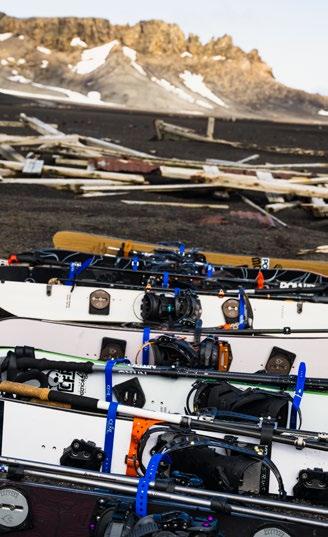

The passage through the Lemaire Channel started the last night at dinner. It was the most beautiful channel, and everyone headed out on the bow to take in the breathtaking scenery of giant peaks with the biggest chunks of ice I’ve ever seen clinging onto them. We were heading towards Wilhelmina Bay, another destination of pure beauty. Here we experienced icebergs, gentoo and chinstrap penguins, and close encounters with leopard seals and humpback whales. A perfect day for reflection, to think about the path—and people—that led to me being in a place I’d never dreamed of seeing or riding. To top it all off there was really good snow and lots of pow turns to be had.







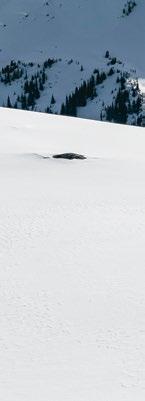

Whistler, British Columbia






STEP 1 A scenic helicopter ight to the top of a remote peak
STEP 2 Descend 1,000 ft of bottomless powder turns

STEP 3 Throw on your touring skins, drop a layer, hike back up
STEP 4 Repeat all day
STEP 5 Helicopter pickup at the bottom of your last run
STEP 6 Fly home for Après!
December 2

The last morning of the trip, we decided to check out an old Argentinian base that had cables strung over entire buildings to hold them down from the wind—my kinda place. We cruised around looking at the structures and found some enormous windlips which we sessioned for as long as the relentless gale force winds would allow. Then we retreated back to the ship for a quick reset and the buffet lunch I had quickly grown dangerously accustomed to.
With full bellies, we headed out to a new zone made up of glacier ice and panels of corn snow glowing under the now clear-blue sky. All was smooth walking up, until we crested over the top of a ridge and were greeted by my favourite host, the wind. I transitioned fast, scared the gusts would tear my skins right out of my hands never to be seen again. Evading the howling fury at the top, we descended into some of the most scenic turns of my life, party shredding all the way to the Zodiac.
Heading home, the Drake Passage wasn’t as friendly as the way in. Waves crashed over the front of the ship like something I’d only seen in documentaries. I secretly enjoyed the sway, sitting at the bar watching new friends turn green and yellow. This was a trip I will never forget, like nothing I had ever experienced before—the wildlife, the ice-covered mountains jutting straight up from the ocean, the amazing people we shared the journey with.
Sleep didn’t come easy amidst the storm (and for days after returning home I’d still feel the motion of the boat when I lay in bed) and I let my mind drift back to Wihelmina Bay and the summit ridge where we’d enjoyed such good turns. That ridge, the most rugged and gnarly of the trip, had been the spot I was looking for—a place to leave some ashes of my friend Dave Henkel. Since Dave’s passing in 2021, I’ve carried a small urn with me everywhere—from Alaska in the spring and now all the way to the bottom of the world. He would have loved Antarctica and would have been the first person I’d share my stories with when I got home. Bringing Dave to remote places like this, having him along for these adventures, it makes me happy.
There is a rule about leaving nothing behind in Antarctica, but I knew I’d break it to help ensure Dave continued to be such a well-traveled man. I cracked open his urn and a flood of memories and emotions rushed through me as I tossed my friend’s spirit to shred across this incredible rugged land. For once, the wind was working in my favour.


Available at
Whistler l Squamish escaperoute.ca
Your Local Backcountry Gear Shop Since 1990.
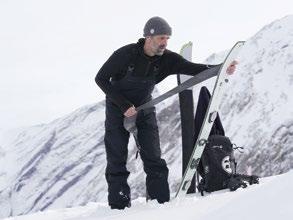




Beyond the waves—a glimpse into the other side of big BC surf personalities
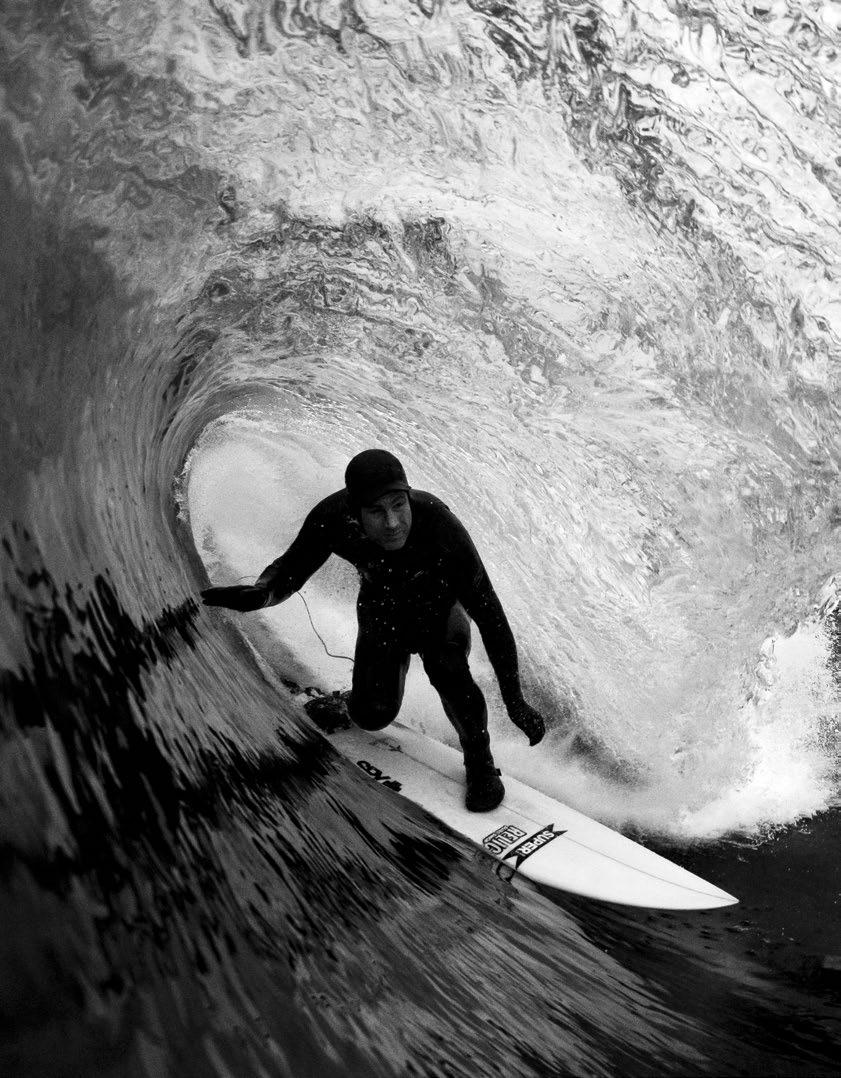


We live in an era when professional athletes are often put on a pedestal, while we mere mortals watch from afar and attempt to recreate their displays of athleticism (doing them no justice whatsoever). And yet we often forget that these incredible people are just that, people. They bleed the same as us, feel the same emotions, and have vast interests outside of the disciplines for which they’re known.
This past season, I wanted to capture photos of some talented Vancouver Island surfers spending their time and feeding their souls when they’re not out showcasing their talents and bravery in the cold waters and harsh elements of the Pacific Northwest. Because inside that thick neoprene is just a person living life the best they can.
Malcolm Daly is a jack of all trades, but also a master of most. He prefers to work with his hands, and enjoys figuring things out on his own. His love for surfing started when he was growing up in Alberta, where he would cut surfboard shapes out of plywood and balance them on an old oak barrel. Although 1,300 kilometres away from the ocean, he was determined to master the craft. Trained as a professional electrician, Malcolm adapted his energy for learning into mechanics, happily offering to work on any friend’s truck, even on his days off. Fatherhood is Malcolm’s latest hands-on project and, as expected, he’s diving in head first.

Michael Darling is a genius, though he’ll never admit it. A professional surfer by day and a mechanical engineer by night, he runs a manufacturing business out of his garage and can make anything you could ever need or want. He’s been called ‘the fastest Canadian surfer on the West Coast’, though when in the shop among his element, he works slowly and meticulously, focusing on minor details that others might overlook. His all-in approach is how Michael approaches all aspects of life, even his cat, Hobie.





Sanoa Olin is in the midst of forging her own path. Recently picked up by Red Bull and no longer living in the shadow of her older sister Mathea, Sanoa’s making a name for herself in international competitions and just free-surfing around her home in Tofino. Though her professional career is gaining momentum, she continues to be very family-oriented. From working in the greenhouse, to helping babysit her younger brother Mav, to building an off-the-grid vacation home with her mom on Nootka Island, Sanoa’s going places, but she's staying home as much as she can.
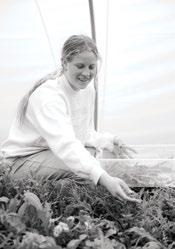
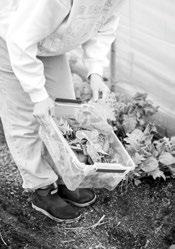
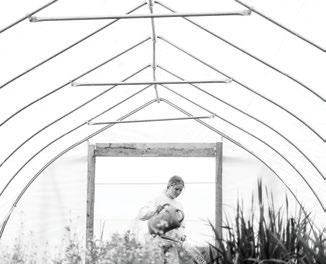



















Curtis Parker absolutely charges on a surfboard, which is impressive for a guy who lives three hours away from the surf and works a day job. He’ll get pitched over the falls multiple times in a heavy session but still somehow manage to get the wave of the day, even in the most crowded conditions. Unable to travel for surf during the COVID lockdown, Curtis leaned into his other passion—herring! Using Instagram
Live to broadcast a weekly podcast/talk show, Curtis created The Herring Hotline, a podcast dedicated to only herring fish snacks (and, reluctantly, sardines as well), that also found him interviewing everyone from professional surfers, to medical doctors, to photographers, and more. And if you’re not eating six to ten tins of Brunswick Seafood Snack per episode, are you really even podcasting?





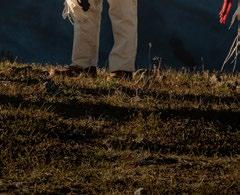


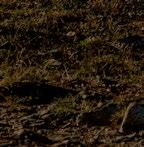



Reed Platenius has grown up so fast, it makes me feel old. It seems like just yesterday that he was the quiet 12-year-old kid pulling into every closeout he could find at Cox Bay. As he attempts to push his way out of grom status at the ripe age of 18, Reed still has a childlike curiosity that so many of us seem to lose over time. When I came over to shoot him painting in his mom’s studio, I asked Reed what he was creating. His answer was simply “art”.
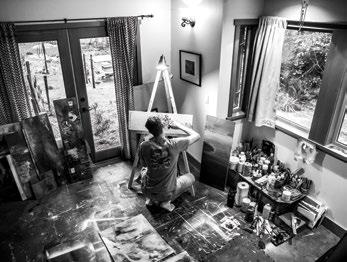


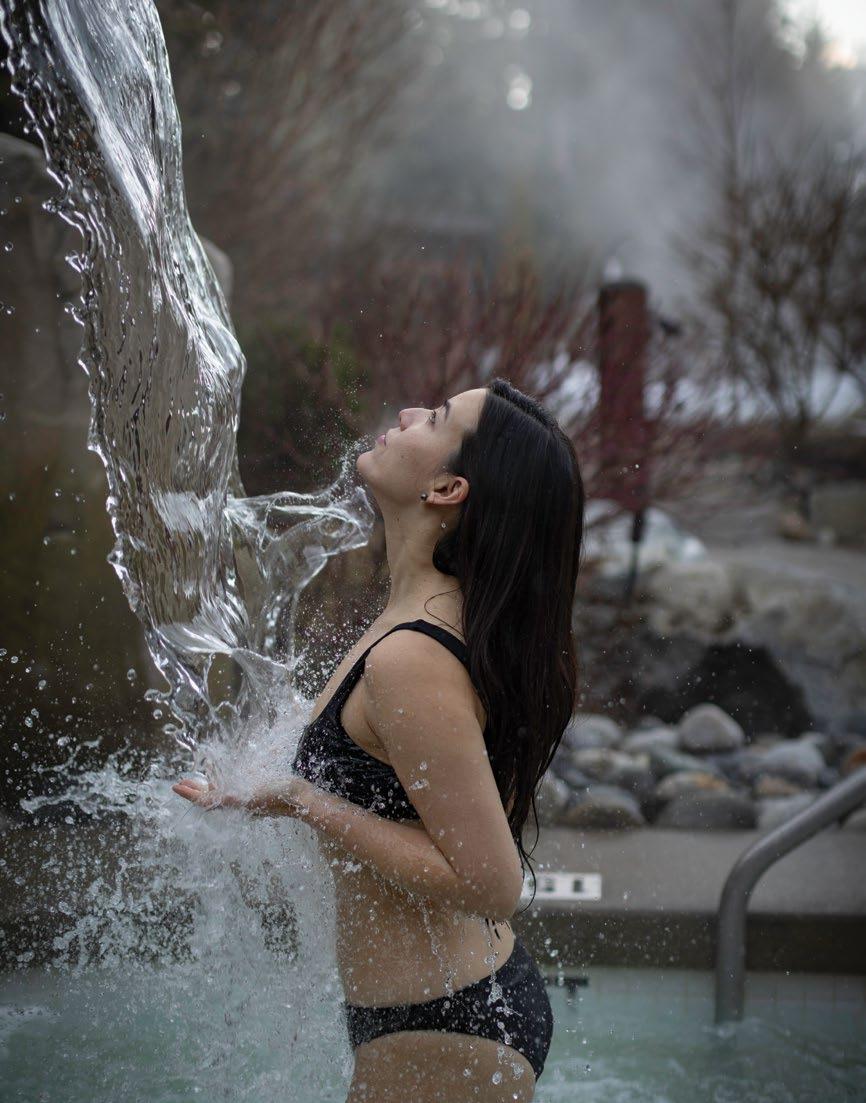
Hanna Scott is a hard person to track down. She’s always on the go, or travelling to exotic lands with the Vans team in search of pumping swell and good times. When she is home, she tries to take things more slowly. When she’s not spending time with friends and loved ones, Hanna is most likely alone with her sewing machine. Sponsored by apparel companies since she was a teenager, Hanna embraced the constant stream of free clothes as an opportunity to start altering them herself. Curiosity and creativity took over as Hanna nourished a new passion for personalized fashion.


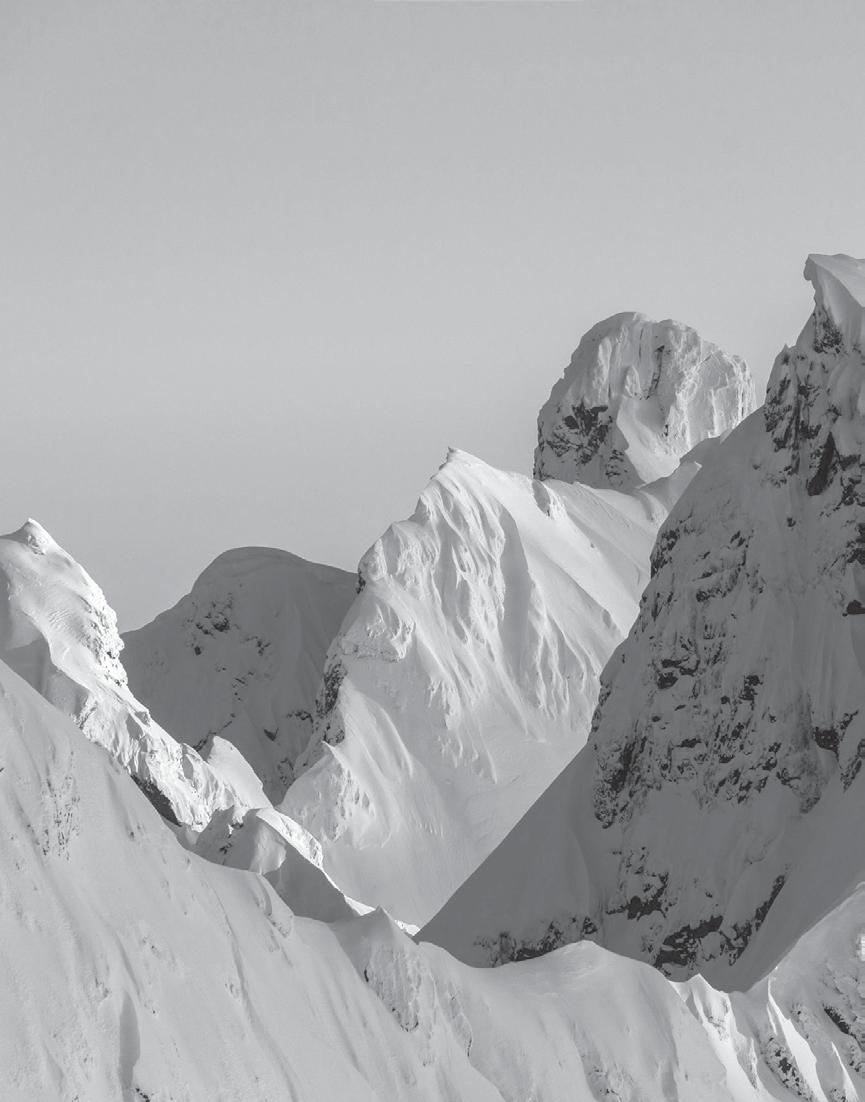

















Released by the Sky Parour
words :: Laura Newton

For many, the Coast Mountains represent vast opportunities to explore new ground, push personal boundaries, discover new realms of fear and exhilaration, and marvel at the astounding beauty of it all. For multi-disciplined artist Feral Nifty, since her return to BC five years ago, life in Whistler has released her into a wild landscape of creative possibilities and offered her unfettered access to the awe-inspiring panoramas of her own artistic soul. This exciting—and at times scary—adventure has been one that she’s convinced could have only unfolded in this place, in this community.
Joining Feral in the studio perched above her house, affectionately known as the Sky Parlour, provides an inspiring and quintessential Whistler view—the runs of Whistler and Blackcomb are laid open like a book out the window, flanked by Black Tusk in the distance to the south and Wedge, Rethel, Weart, and Armchair mountains to the north. But the space within the studio offers a visual panoply all its own: a mannequin clothed in an apocalyptic costume à la Mad Max; guitars, keyboard, mic, and recording equipment; a wall of easels adorned with paintings in various stages of completion; bronzed sculptures of heart-wrenching human vulnerability; stacked notebooks and a dizzying array of art supplies; neatly hung costumes, strewn feathered boas, and an assortment of Muppet-like puppets and random Muppet-like-puppet body parts. “There is no method to the madness,” Feral jokes. “Only madness.”
However, while the creative energy of the studio truly frenetic, there is calculation to the chaos.
Feral Nifty—a name bestowed upon her by her daughter (via an autocorrect that snowballed)—may indeed be feral when it comes to the creative process, but her art is created with the care and attention of a skilled surgeon. Her wide-ranging projects—sculpture, painting, a jazz band, solo music, writing, spoken word, and anything else that may whet her artistic appetite—arise from a singular focus: to nurture an environment of creative self-expression, for herself and for others.
Growing up on Vancouver Island, Feral thrived when able to explore creatively. In her late teens, she moved to Vancouver to train as a makeup artist at renowned beauty school Blanche Macdonald, followed by a stint in special effects makeup in the film industry before Feral found a passion for teaching at her alma mater. Around the same time, she discovered a strong connection with the medium of sculpture. “From the moment I sat down and started sculpting, I felt like…it was innate for me.”
While in Vancouver, she also met her husband, John. The two got married, moved to Malaysia, had two children, and grew a business together over the next three years before relocating to Oregon. “Everything (art-wise) was on hold, really.”
It was during the final few years of the family’s nine-year stint

(especially of an animal) in a wild state, especially after escape from captivity or domestication.
in Oregon that Feral was able to find some shared studio space. “As soon as I had that, I couldn’t go back. I don’t think anyone around me could handle me again without space to create either,” Feral says of having the freedom to sculpt again.
However, something was still missing artistically. A totality. A raw openness. A literal and figurative space with which to really explore the outer ranges of her creative potential. The return home to BC and move to Whistler marked a seismic shift.

“It is one of the best things that has happened to me creatively,” she says. “I feel like I found myself here, though it aligned with a lot of other changes.” While the move came at a time when—with her children growing older—she had found more time for herself, the move also supplied Feral a studio space of her very own and the network of the likeminded, passion-driven people this area attracts. “It’s been such an open and welcoming community,” Feral explains. “I’ve not come across much in the way of arrogance, it’s inclusive, caring, and supportive. It’s an amazing thing to be a part of.”
From participating in community art projects and shows, teaching through the Learning to See art program, and presenting her solo exhibit Back in a Moment at the Maury Young Arts Centre in 2021, to being awarded first place in Vancouver’s Federation Gallery Shape and Form exhibit for her sculpture, “Veneer of Shelter,” a third-place and an honourable mention for two of her paintings, as well as best in show in the On the Edge exhibit for the sculpture “Expectations,” Feral has been busy.
But perhaps most exciting for Feral has been her formal foray into music, writing her own songs, singing in the jazz trio Bîrdsong, and even releasing her first solo project on Spotify.

“I think my attitude toward myself changed since I’ve been here,” she explains. “You know, rather than that self-judgement. I’ve come to realize that it’s really about sharing. And as soon as I started making that shift, I felt peoples’ response to me shift as well.”
“When it comes down to it, I seek sharing. I seek connection,” says Feral. “That’s what it’s about for me.” feralnifty.com



“It was a pleasure working with Adam during my real estate transactions. His attention to detail and high-level of efficiency is impressive.” – Amélie























 words and above photo :: Kieran Brownie
words and above photo :: Kieran Brownie
It was late in 2007, in Rossland BC, when Tracey Saxby hit her breaking point.
Her feelings at the time were not entirely unique—Tracey felt powerless in the wake of everything going on around her—the climate crisis, ecosystem degradation, and especially the global proliferation of singleuse plastics.

What made this breakdown special was how Tracey acted on it. She spoke up about her concerns and found herself surrounded by a strong core of local, like-minded women wanting to help. Tracey quit her job as a marine scientist and committed to the cause. She soon found herself directing a team of 50 volunteers. In less than a year, Rossland reduced the town’s reliance on plastic shopping bags by 75 per cent. The only problem was that municipal governments did not have the authority to ban single-use plastics.
Tracey took the campaign on the road, travelling from town to city with her presentations and speaking with newspapers and radio shows. Her tireless dedication paid off, in part because of how she framed the campaign as a “challenge.” Tracey found that gamifying her cause energized more people, and support really took off after a CBC Radio interview. As her inbox ding-dinged with countless emails from across the country, Tracey threw herself into the campaign with twice as much vigour…then she burned out.
“I ended up volunteering 180 hours in
two weeks,” she explains. “It took a toll on my body…I had to step back.”
But the embers of disruption kept smoldering until 2011 when a 21-year-old page in the Canadian Senate named Brigette DePape interrupted the Speech from the Throne raising a red paper sign with the words “Stop Harper.” Since Stephen Harper was the prime minister of Canada at the time, the stunt made front-page news. Tracey, now living in Squamish, felt the flame return. She picked up where she’d left off, banging the plastic-ban drum at any and all in range. In 2019, thanks in part to the work of Tracey and the community of Rossland years earlier, and more recent city-wide action in San Francisco, the City of Victoria announced they would ban single-use plastics. Rossland followed suit, with other communities, and the BC Environment Minister’s office adding support. Representing plastic (and/or oil) companies, the Canadian Plastic Bag Association (CPBA) started suing cities and municipalities who dared take a stand on plastic waste.
In June 2022, the Government of Canada issued a country-wide ban on manufacturing and importing plastic bags, takeout containers, single-use plastic straws, stir sticks, cutlery and six-pack rings. That ban came into effect in December 2022, with domestic sales of those items to cease by the end of 2023 and exports by the end of 2025 (with the exception of straws for certain medical and accessibility needs).

For Tracey, it’s a sweet victory, and one with an intriguing twist. At a panel discussion on the proposed Woodfibre LNG facility in Howe Sound, Tracey had the chance to meet Brigette DePape, the “Stop Harper” advocate who inspired her to pick up where she’d left off. She thanked the young woman, but Brigette cut her short, saying, “No, thank you. You’re the Cloth Bag Princess.”
It was Tracey’s passionate campaign that had inspired Brigette to push for a plastic bag ban at her own university and start down her own path of advocacy—a circle of influence and action perfectly exemplifying the famous quote by cultural anthropologist and icon Margaret Mead: “Never doubt that a small group of thoughtful, committed citizens can change the world; indeed, it’s the only thing that ever has.”
DROPPING NOW: EXTREME SKIING LEGEND GLEN PLAKE
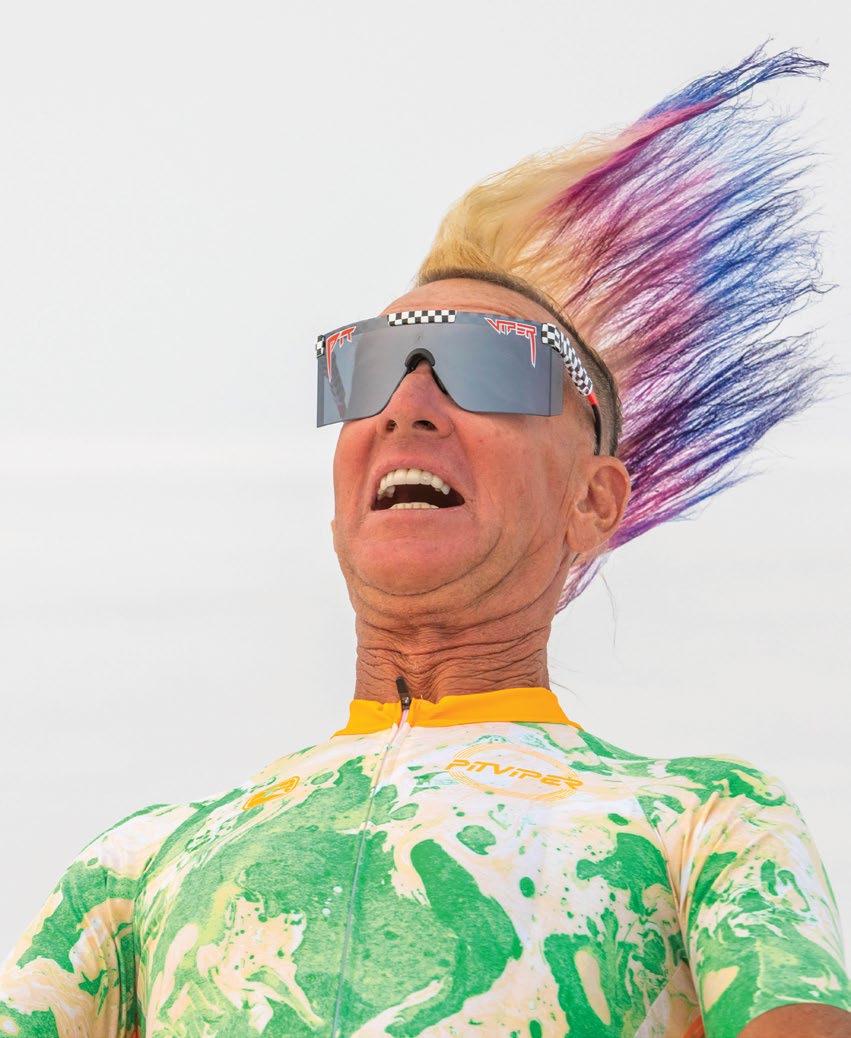

The Elan Ripstick Tour was created for backcountry skiers with the intent to deliver the superior downhill performance of a freeride ski, at a fraction of the weight for uphill efficiency.




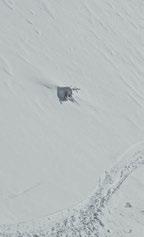
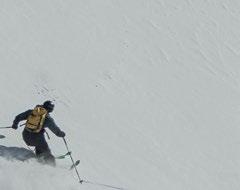

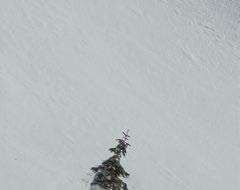


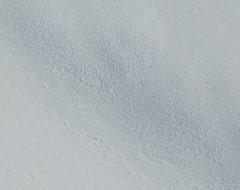


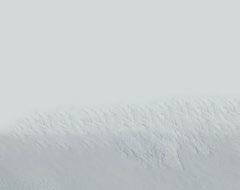
elanskis.com
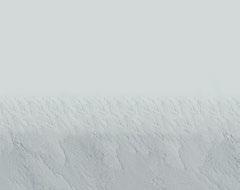 Vogel, Slovenia, 2022
Vogel, Slovenia, 2022
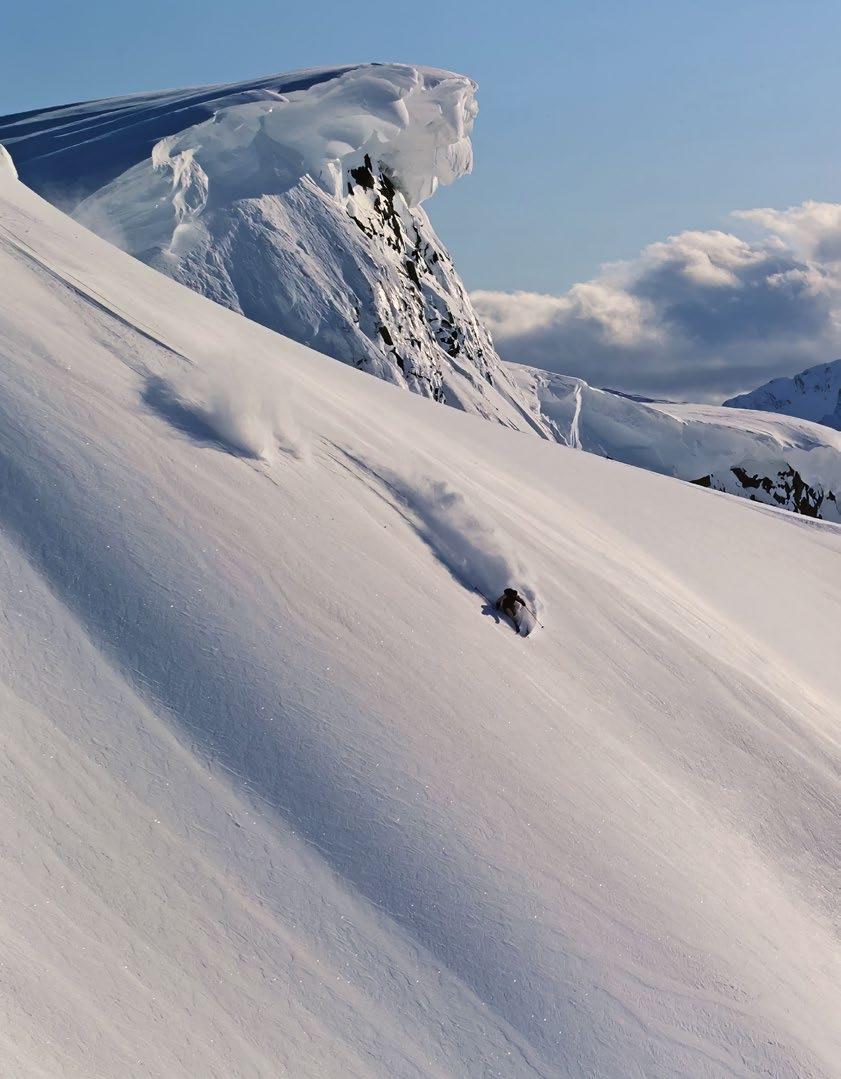
This is why magazines are important.
Canadian ski legend Eric Pehota remembers skiing this face, but not really. “It’s Cloudburst Mountain,” he says, “late spring, huge cornices, sometime in the 1990s. Maybe early ‘90s, maybe later. I’m not sure what we were doing there, but I remember we took a good look at that vertical face over by Tricouni on the flight home. You know, the one you see from the highway that doesn’t always fill in.”

Photographer Paul Morrison offers slightly more beta, but again…not really. “We were shooting for Rossignol, or maybe Quicksilver. I think Eric is right about the ‘90s, and for sure it’s late in the season to get a cornice like that. Jai Condon was the guide; he might possibly remember something…”
Jai Condon: “That was a long time ago. I barely remember what I did yesterday.”
So, there we have it. This is why magazines like Mountain Life serve an important purpose—we’ve captured and recorded 18 years of key local history in these pages. And that’s a direct link back to the romanticism of those days before all the posting, scrolling, liking…and then forgetting when the next “epic” thing beams in. Back when this picture was shot, people would just head out, have fun, probably go for a beer after, then do it all again the next day. And no one would be the wiser.
Until maybe one day, the following winter, someone would tear a photo like this one from the pages of a magazine and tape it to the wall of the bathroom they shared with four other ski bums in a notorious party house where dozens, maybe hundreds of people would see that shot over the course of the winter. Let the record show: those kinds of “likes” still count for way more.
photography :: Paul Morrison words :: Feet Bankswords & illustrations ::

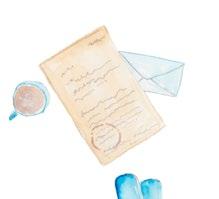



Stashed in an envelope, sealed with saliva, and delivered by a person in uniform. Written by hand and delivered by hand, torn open immediately, or tucked away for later—a letter is a tangible time capsule that travels from the writer’s world to the recipients. It’s just words, simple ink written on plain paper, but it carries so much more. Not complicated to create, not difficult to send…but magical to receive, particularly these days as the oldest form of long-distance communication is a dying art.

In the age of convenience and instant gratification, seeing your name handwritten on a battered envelope can’t compare to the sterile ping from a cellphone. A letter is to an email or text is what a woodstove is to a furnace—both serve the same function, but the feeling is very different. Heat from a wood-burning fireplace requires time, patience, and planning—there is no flick-of-the-switch. Likewise, even the latest-greatest messaging app can’t replicate the intention and warmth of a handwritten letter. And unlike a postcard, a letter is private. Just like a wood stove, writing and receiving a letter is romantic. Rudimentary, rustic and real. Never written one? Here’s how…
Whether writing to grandma across town or to a university roommate on the other end of the Earth, getting an address can be a significant obstacle. Maintain an element of surprise and ask a friend or family member for the address you need. Or, (perhaps creepier) use Google Street View to help find a house number, look up a postal code, then grab an envelope and put the address on the front, and yours on the back. Tear a page from a notebook and…pause.
But don’t overthink. Before putting pen to paper, organize your thoughts. Will you bring the recipient to this moment, describing how loud the rain is battering at the window, or how the coffee shop brew is just right? Or are you outside with the sun warming your back? Are you nursing any injuries, or had any adventures—or better—misadventures, lately? Give your recipient something to smile over or laugh at when they re-read this letter years from now. Or, alternatively, recount a moment that made you think of them recently: a favourite memory or the last time you were together. Prepare your mind. Paper encourages flow—there’s no backspace, no copy and paste icons. So, write it right.
Thoughts translate through a pen and paper differently than on a keyboard. Use artistic license and write about themes that don’t fit in an email. Embellish, use juicy descriptions or fancy vocabulary and play with language. No spell check or suggestions, the words are truly yours, straight from frontal lobe (or heart) to the page. And don’t second guess your scribbles or hate on your (probably out of practice) penmanship. Handwriting adds flavour and is your personality manifested on paper. Slow down enough to make it legible and let it the words spill out.
Add the date. Snail mail can take days or weeks to be delivered, and letters can live on long after they are received and read. Yours might get thoughtfully tucked into a photo album or lost between the pages of a novel. Unlike clogged inboxes of searchable emails, a letter can only be destroyed by fire, water, a paper shredder, or a flushed toilet. Each is like a leaf of history, telling a tiny part of your story to whoever may read it—intended or unintended. When your forearm is cramping and your fingers feel like chunks of wood, sign your name.
Buy a stamp. Lick it, stick it, and drop the leaves of paper into the dark abyss of the bright red Canada Post mailbox. Now the journey begins—you’ll never know when your letter departs, who handles it along the way, or when it will arrive. Your thoughts, scribbled on paper, being invisibly passed along to land in the hands of a friend. Like magic. That’s what makes letter writing an adventure—that leaning into, and physically opening up to, the unknown.

and Incredible sandwiches

Locally owned and operated





Supporting Local Breweries

#21 - 4314 Main St.

(Just up from the olympic rings) Follow us @stinkyswhistler
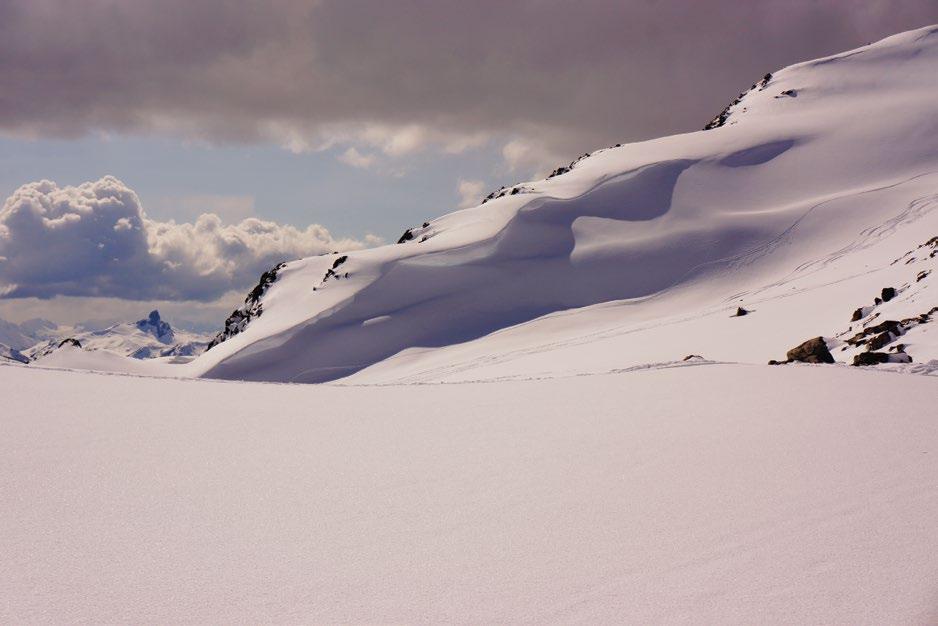
Purpose-built for vertical pursuits, the brand-new Zealot Series is a fervent expression of adventure, from the climbing gym to the crag. With two pack volumes and accessories to support your upward progress, Zealot ensures the crux is never your gear.

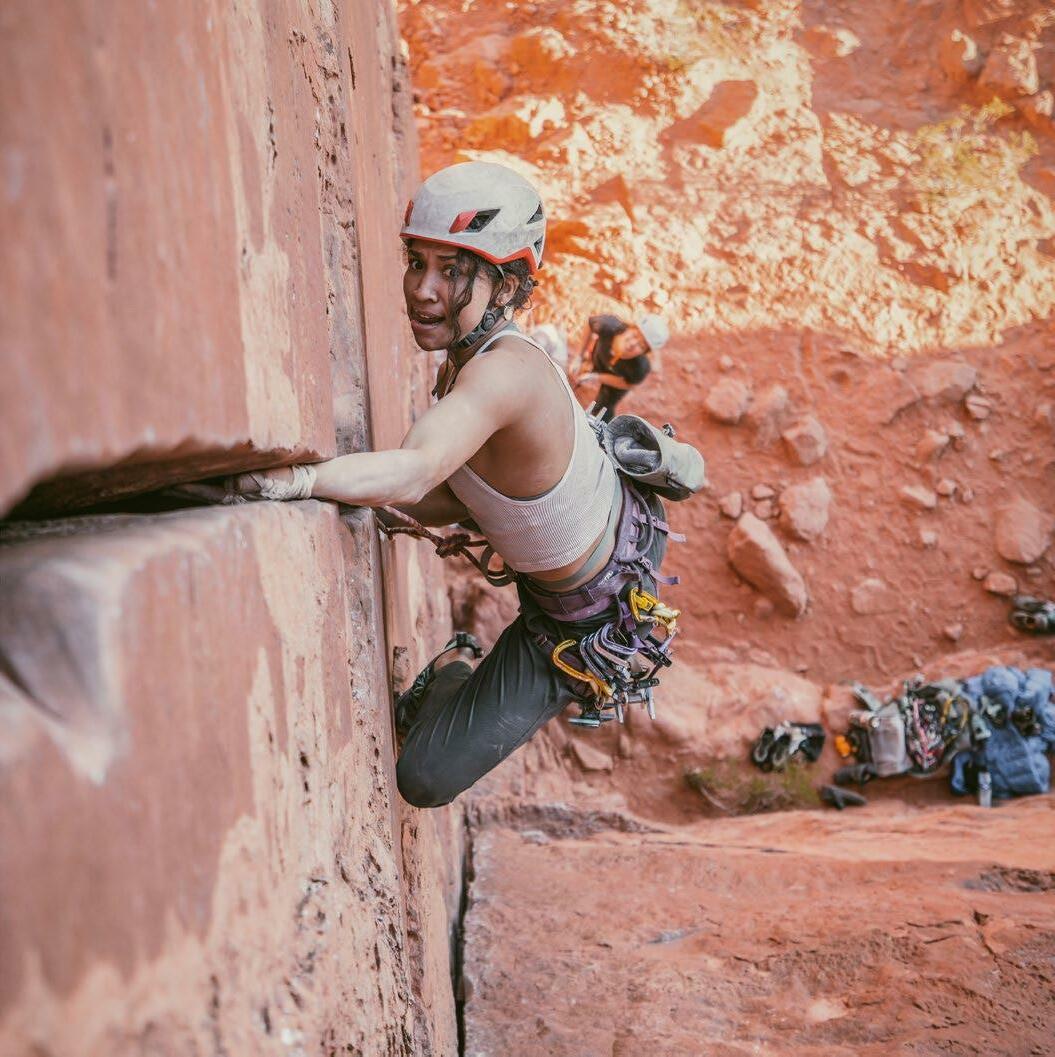
Recently, I attended a talk given by Jennifer Jordan, author of Savage Summit, chronicling the women who have climbed K2 and then died—either on the descent or later on other formidable Himalayan peaks. Jennifer claimed that all high-altitude climbers—male and female—are chased by demons. And by extension, all extreme skiers, kayakers, rock climbers, and mountain bike riders are also chased down the mountain, or up the mountain, or over the waves by frightful gnomes pulling the puppet strings of their brain neurons.
Is that true? All of us? Always? In my own life, I’ve hung it out there a few times. And even though I recognize the demons when I see them, I’d like to think that for the most part I was on a quest to seek moments of flow, tuning into the sublime, while waves of water or snow passed overhead, dancing rainbows in the sky.
To understand what drives us humans to do whatever we do, I find it helpful to examine the behaviour and survival of our Paleolithic ancestors.
Proto-humans evolved around five million years ago. Over the millennia, our ancestors grew big brains, walked upright, and learned to fashion primitive stone tools. I think it’s safe to presume that individuals “chased by demons” into exhibiting extreme bravery in the hunt or in battle would have had a high probability of successfully feeding and defending the tribe. It also seems reasonable that if those individuals survived their recklessness, they’d enjoy an increased probability of finding sexual partners and passing their genes onto the next generation. (Just look at the group behaviour, hierarchy, and sexual selection of wolves, lions, and baboons.) So, all this would imply that a propensity to be “chased by demons” might rank pretty high up there among genetic survival attributes and be a common character trait of us moderns.
But that’s not the whole story. About 70,000 years ago, all those “chased by demons” humans weren’t doing so well from an evolutionary standpoint, and were close to becoming extinct. Then “something”
happened and our population exploded. What was that “something”?
From the evidence in the fossil record, archeologists have learned that at the same time the population exploded, people began creating art and using symbols that imply spiritual journeys. Thus, it seems likely (though also a bit of a paradox), that seeking the sublime played a critical role in providing the pragmatic power to walk the earth, avoid lions, and raise our young. Of course, those pesky demons didn’t go away and surely remain to drive us and to haunt us, but their influence had to be moderated before our fragile, big-brained human ancestors could thrive.
Today, in our uber-technological, oil-soaked, internet-crazed, climate-altered modern world we are fundamentally no different than our forebears who dug roots and escaped from hyenas on the savanna. We’re all chased by ego-demons, but at the same time, evolution has given us pathways to control all those nasty beasties that can drive us to madness and beyond. I find it comforting to know that fun, peaceful, nonaggressive behaviour such as meditation, art, dance, music, and play are all integral components of the human survival strategy.

Probably it’s just because I’m getting older, but the demons seem to be mostly leaving me alone recently, and I’m glad to see them receding farther into the background. I rode my mountain bike today, across the desert, past grandmother saguaros (cactuskeepers of the ancient wisdoms), around barrel cacti with their yellow succulent buds, and rolled down gravel slopes to cross sandy arroyos. There was no one to watch me and, luckily, no sponsors or journalists to record my performance.
As I write this, the sun just dropped beyond the horizon. The last rays of light cling to the undersides of clouds in red streaks, as if hanging on for dear life, so they don’t slip into the darkness below. My wife, Nina, is preparing hamburgers and broccoli for dinner. We will ride together tomorrow, feeling the compression of the turn, the compression of the togetherness we share. Just living in the van, wintering in the desert, old enough to wonder if just maybe we’ve outrun the demons once and for all.






Naturally spectacular, Fairmont Chateau Whistler delivers true mountain luxury with 8,100 acres of the finest skiing in North America right at your doorstop.

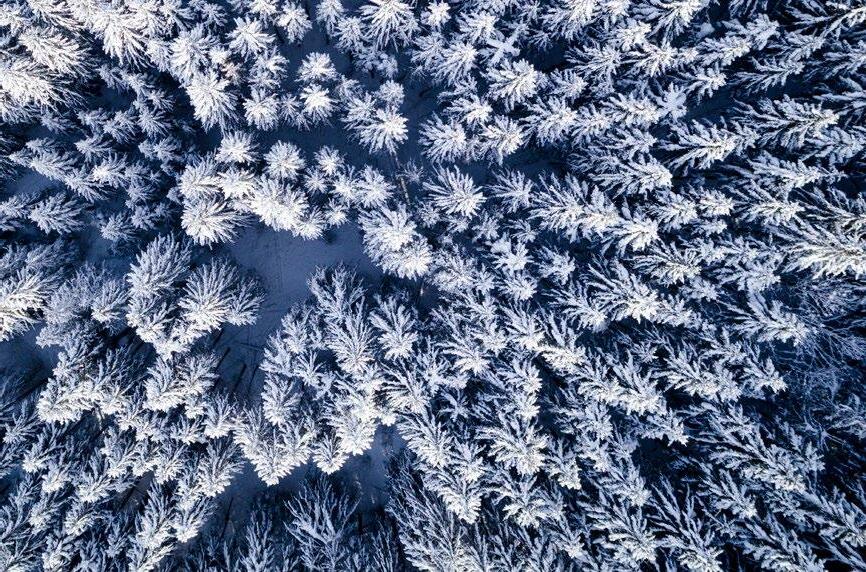

First chair, to last call ― with the Fairmont Chateau Whistler as your basecamp, Whistler becomes your backyard to explore.
STAY LONGER AND
25% SAVE UP TO

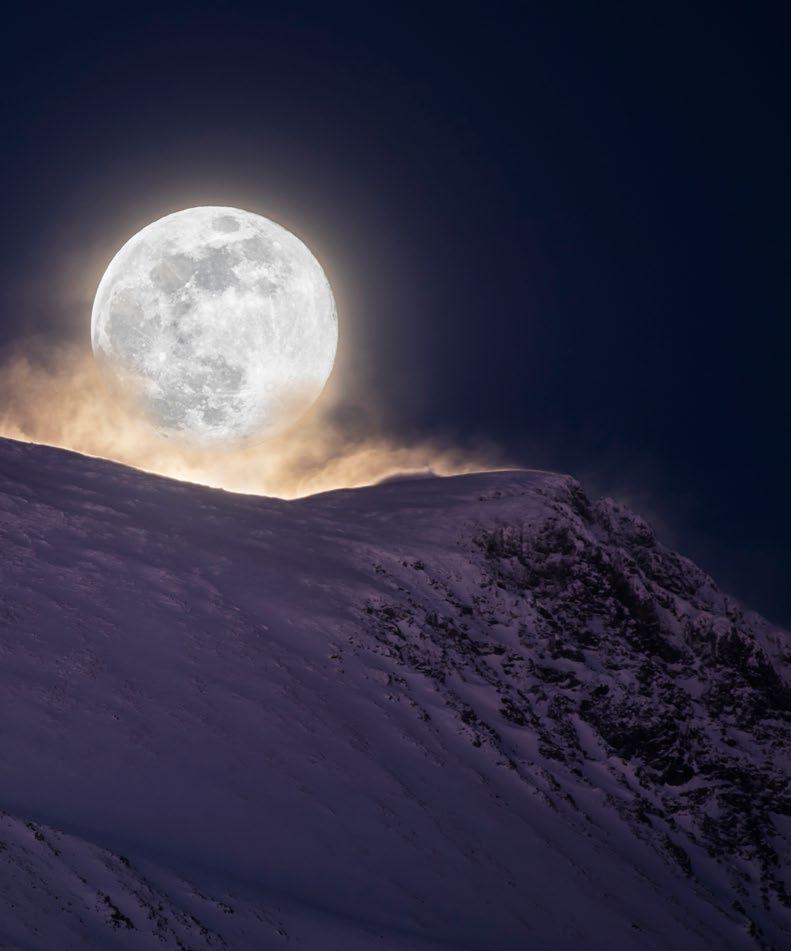



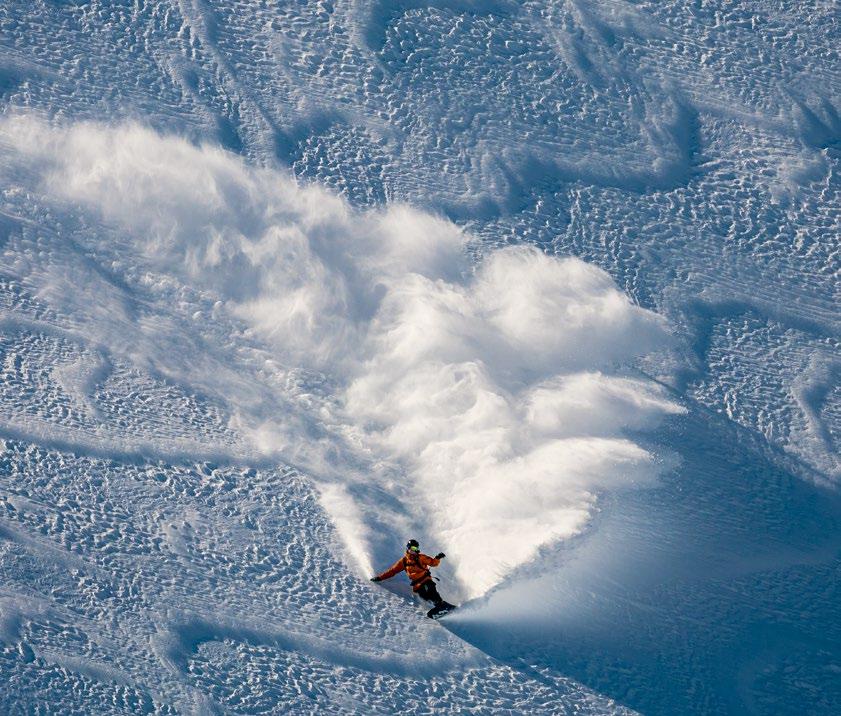


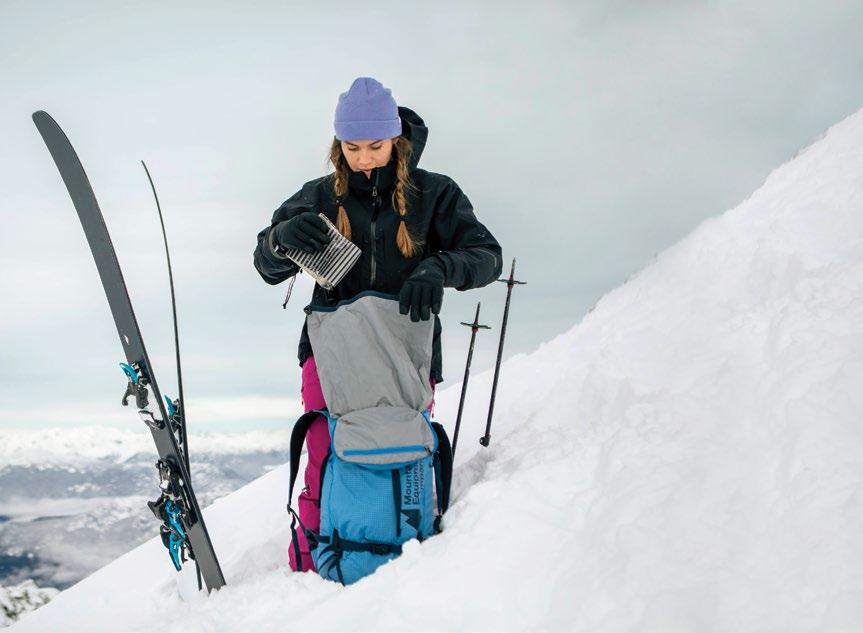
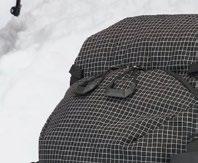


Puffy warm face protection made of ethically sourced white duck down. Designed in Canada.

DID YOU KNOW?
40 to 45 per cent of body heat is lost through the head and neck?
Treat yourself to a puff and stay outside longer.
Choose from 4 sizes in 6 colours
Injury Claims: Minor/Major Injuries
Slip and Falls
Wrongful Death Claims

Business & Personal Law:
Immigration Incorporations
Real Estate Development
Buying/Selling a Property
Buying/Selling a Business
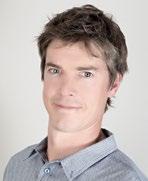

Wills & Estates
Family Law
Race & Company LLP has been proudly serving the Sea to Sky and our worldwide clientele with local knowledge and proven integrity since 1973. Our 35+ lawyers and staff are dedicated members of the community, providing volunteer time and expertise to a variety of local charities and organizations.
Eddie Carter Sholto Shaw Kathleen van der Ree A portion of the proceeds is donated to1. Coast Mountain icon Johnny Foon combines local artists with skis handcrafted from locally-sourced yellow cedar and maple. The result is a ski made for the Coast Mountains by people who know them best. This FOON TANTALUS 189 features artist Zuzana Riha’s “Cedar Tree”on a 188mm waist, big mountain charger. Create your own perfect ski at www.foonskis.com // 2. High-contrast colors make THE NORTH FACE MEN’S DRAGLINE

JACKET extra noticeable, but it’s the technology and design that keep it a powder day mainstay. Waterproof, breathable DryVent™ 3L 100 per cent recycled polyester ripstop fabric paired with Aquaguard® zips keeps moisture and wind out, while a helmet-compatible hood and adjustable cuffs allow you to hunker down on weather days. www.thenorthface.com // 3. The DYNAFIT BLACKLIGHT binding is perfect for the minimalist who wants to cruise the climb without compromising performance on the descent. While its weight is minimal, the Blacklight boasts high power transfer, lateral stability, and a wide DIN range from 5-12. Welcome to the lightest speed touring setup available. www.dynafit.com // 4. Never get left out in the dark with the LYNX OGT ORCA POWERBANK

+ FLASHLIGHT. Designed in BC, this waterproof flashlight throws a 2000-lumen beam at max brightness and will run for 26 hours on five per cent brightness (100 lumens). Built-in intelligence will reduce power to avoid overheating and a digital display shows exactly how much juice is left. Best of all, the USB-C charging connector allows you to charge your phone, Lynx OGT headlamp, or anything else that connects via USB. www.lynxogt.com // Freeskiing pioneer Glen Plake’s first signature ski has been a long time in the making, but the ELAN RIPSTICK

TOUR 104 is a ski worthy of his signature and legacy. Designed and tested by Plake from the ground up, the Ripstick 104 blends the lightweight construction necessary for efficient ascents with the legendary performance and style of Plake. www.elanskis.com
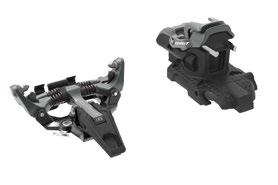















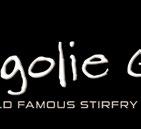

6. Lightweight and efficient, the ARC’TERYX CERIUM HOODY offers warmth without the bulk. Redesigned this winter, this 850-fill Responsible Down Standard (RDS) goose down fill jacket reduces the product’s carbon footprint while remaining the same focused and functional favourite for cold, dry conditions or the changing of the seasons. www.arcteryx.com // 7. Did you know 40 to 45 per cent of body heat is lost through the head and neck? Treat yourself to a PUFF—puffy-warm face protection made of ethically sourced white duck down— and stay outside longer. Designed in Canada. A portion of the proceeds is donated to Protect Our Winters Canada. www.puff.design // 8. The EVO SEASON PASS SKI is the perfect midpoint between touring and resort ripping—an ideal go-anywhere, do-anything ski that waits by the door for the next adventure to come. With a floaty yet responsive profile, this ski inspires confidence all over the mountain. Bucking the wide-ski preconception of “condition specific,” the Season Pass proves that one ski really can do it all. www.evo.com


// 9. The SUREFOOT CUSTOM SKI BOOT combines an ability-specific shell, heater-integrated liner, and a custom orthotic to deliver the most comfortable, best-performing ski boot on the market. Using a gel-like memory foam material, Surefoot liners are custom molded exactly to your foot. Think how great a memory foam mattress feels, then imagine that level of comfort in your ski boots! www.surefoot.com // 10. Tested on the trails of the Himalayas, THE HILLSIDE TRAIL CRAMPON is solid choice for superior traction on icy, snow-packed, or muddy trails in diverse winter terrain and weather conditions. Utilizing an ergonomic plate system, these cleats provide excellent traction, reduces muscular fatigue, and gives you confidence for your winter wilderness pursuits. www.hillsound.ca
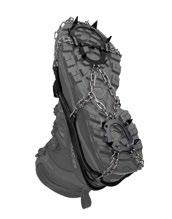


11. Wickedly responsive and effortless in deep snow, the MILLISURF SPLITBOARD delivers knock-out performance every time you strap in. Every turn is worth the hike, and there’s no better feeling than racing up the skin track for first tracks and rubbing your buddies’ noses in your rapture while making perfect virgin turns. www.escaperoute.ca // 12. The iconic PRIOR POW STICK SNOWBOARD has been revised for 2023 with shorter, swifter swallowtail sections to minimize deflection and maximize edge hold without sacrificing pow floatation. An all-new blunted nose provides weight savings, and a slightly shorter overhang makes it nimbler and more versatile in the trees. This is the ultimate flotation ride, and it’s available in 156, 160, 167, 176 and 181cm.

www.priorsnow.com // 13. The KHROMA KINETIC JACKET is Rab’s softest ski mountaineering hardshell. Their signature Proflex fabric is a trifecta of backcountry comfort: it’s stretchy, breathable and durable. Forget about strain and struggles, the shell’s flexibility makes transitions in the mountains smooth like butter. And the stretch and breathability don’t come at the expense of durability: the fabric’s tight weave practically repels damage from rocks, trees, ice axes, alders and the like. Check it out, with matching bib pants at www.rab.equipment/ca // 14. Impress your friends and put fear into the hearts of your enemies with the MOUNTAIN LIFE RIDE OR DIE T-SHIRT. Featuring artwork by Maddi Saez, and available in mens, women, or unisex swearshit. www.mountainlifemedia.ca


// 15. Manufactured and tested for performance at the Mustang Waterlife Studio in British Columbia, the Women’s HELIX DRY SUIT CCS makes in-water activities available year-round. A robust, highly-versatile solution for any in-water adventure, the Women’s Helix features a waterproof zipper, moulded kneepads, neoprene wrist cuffs and CCS adjustable neck seal that are customizable for fit and comfort. www.mustangsurival.ca
→












